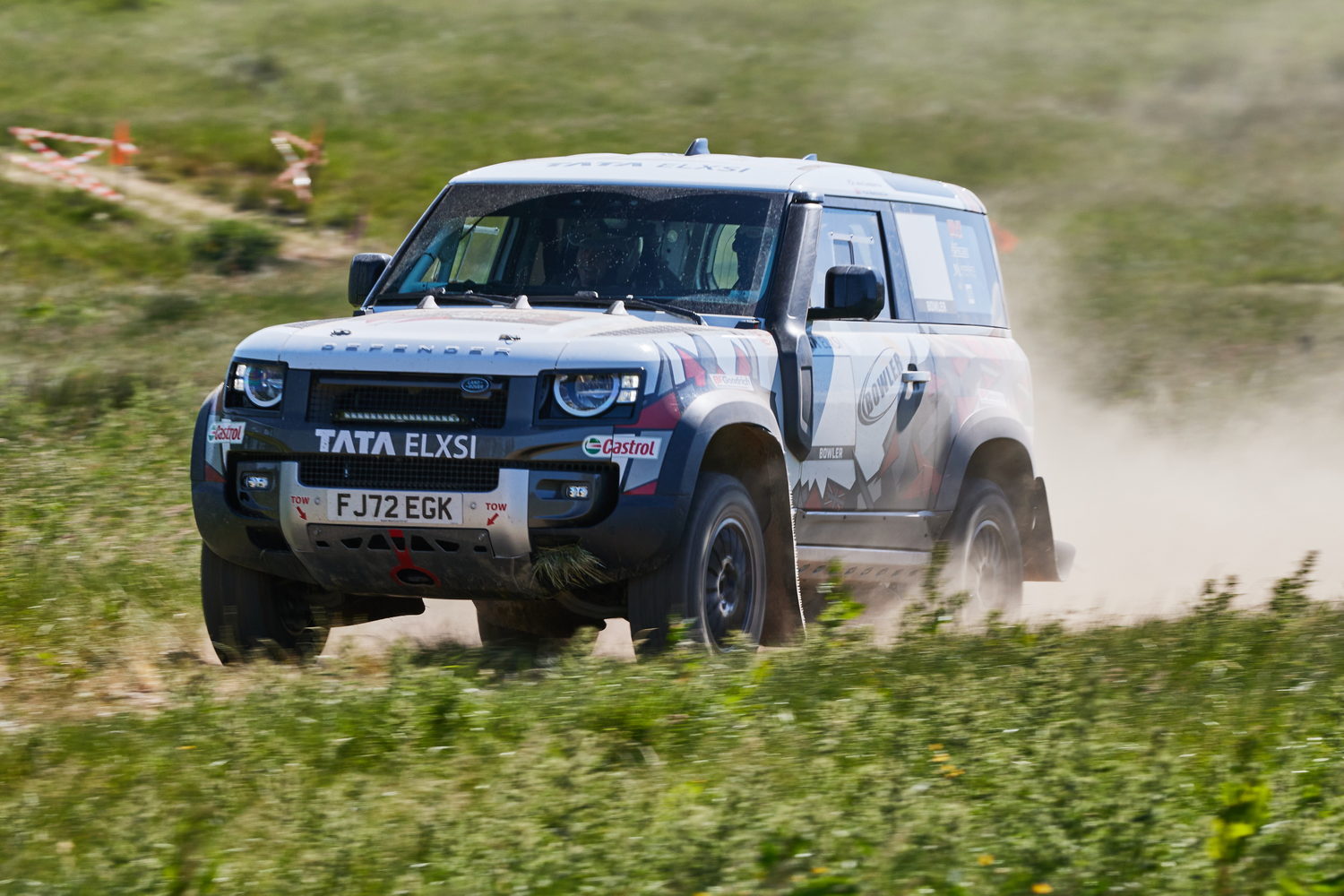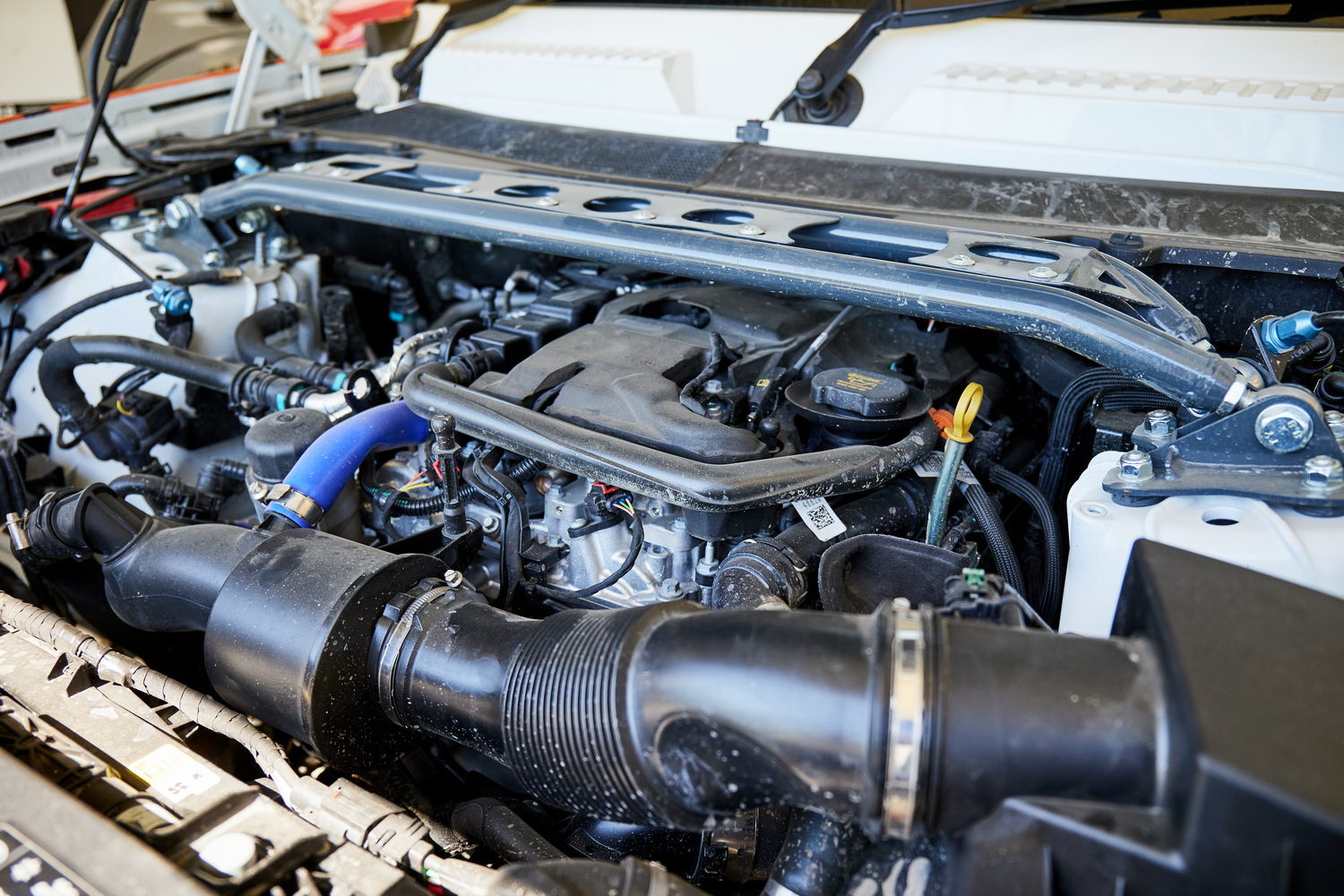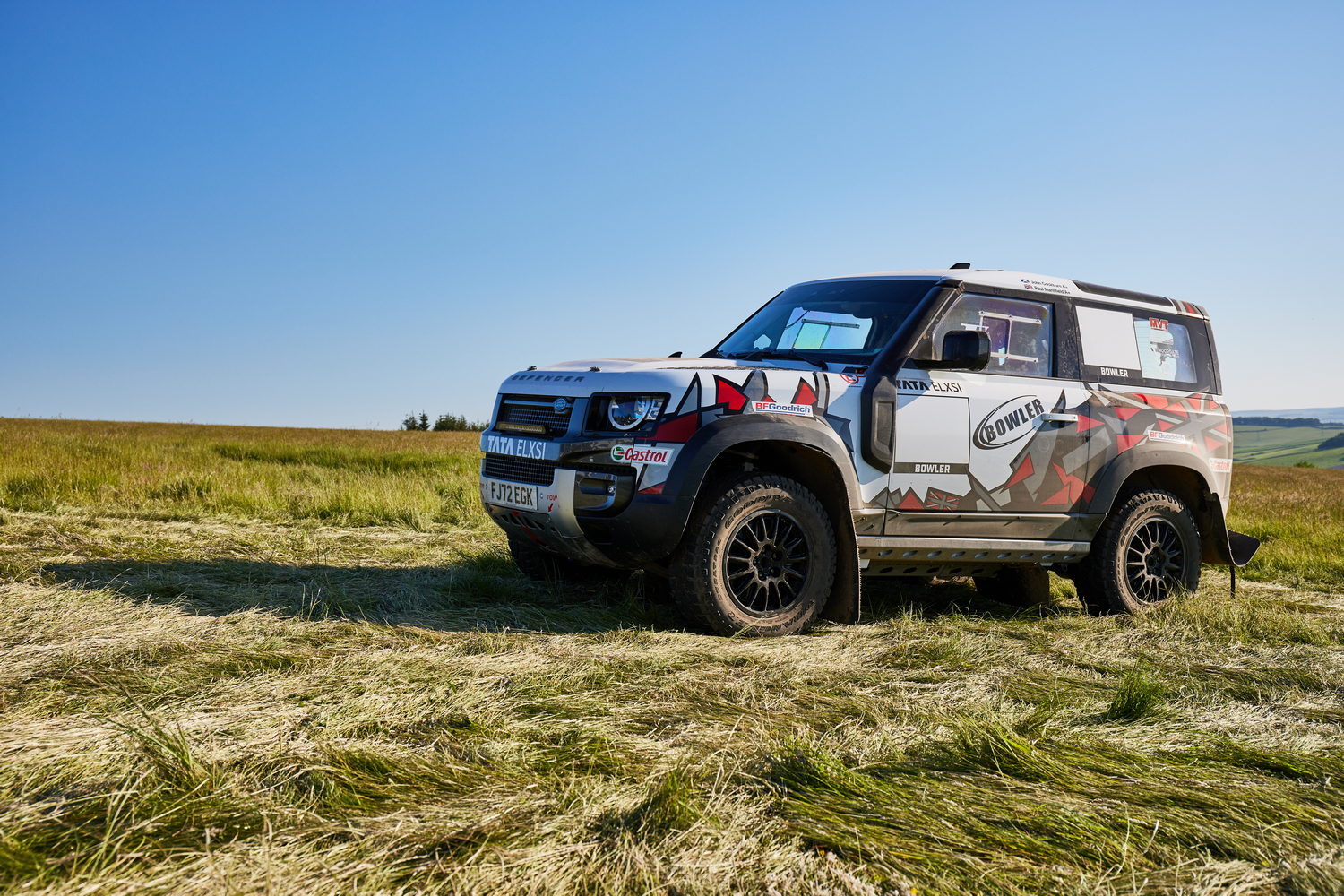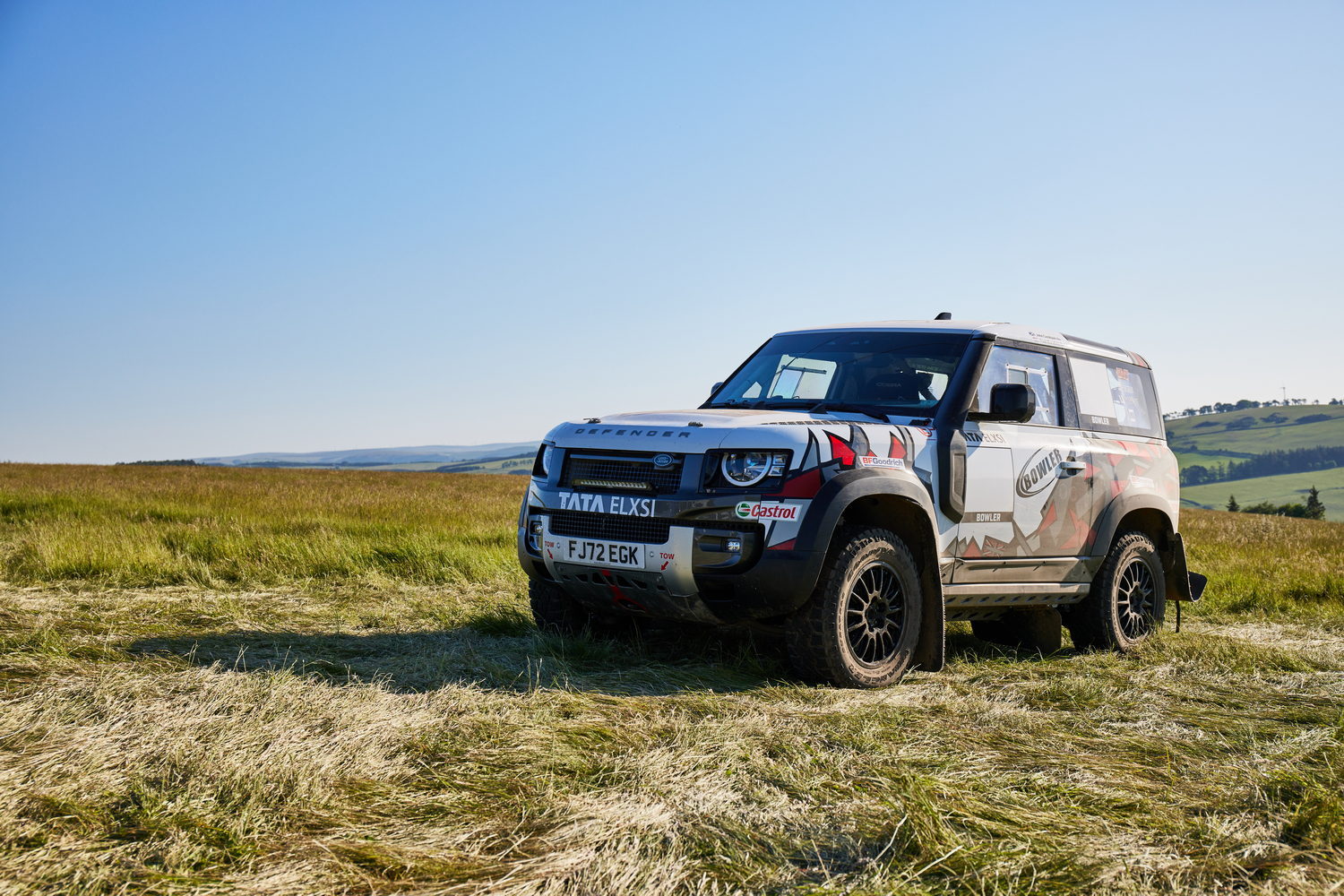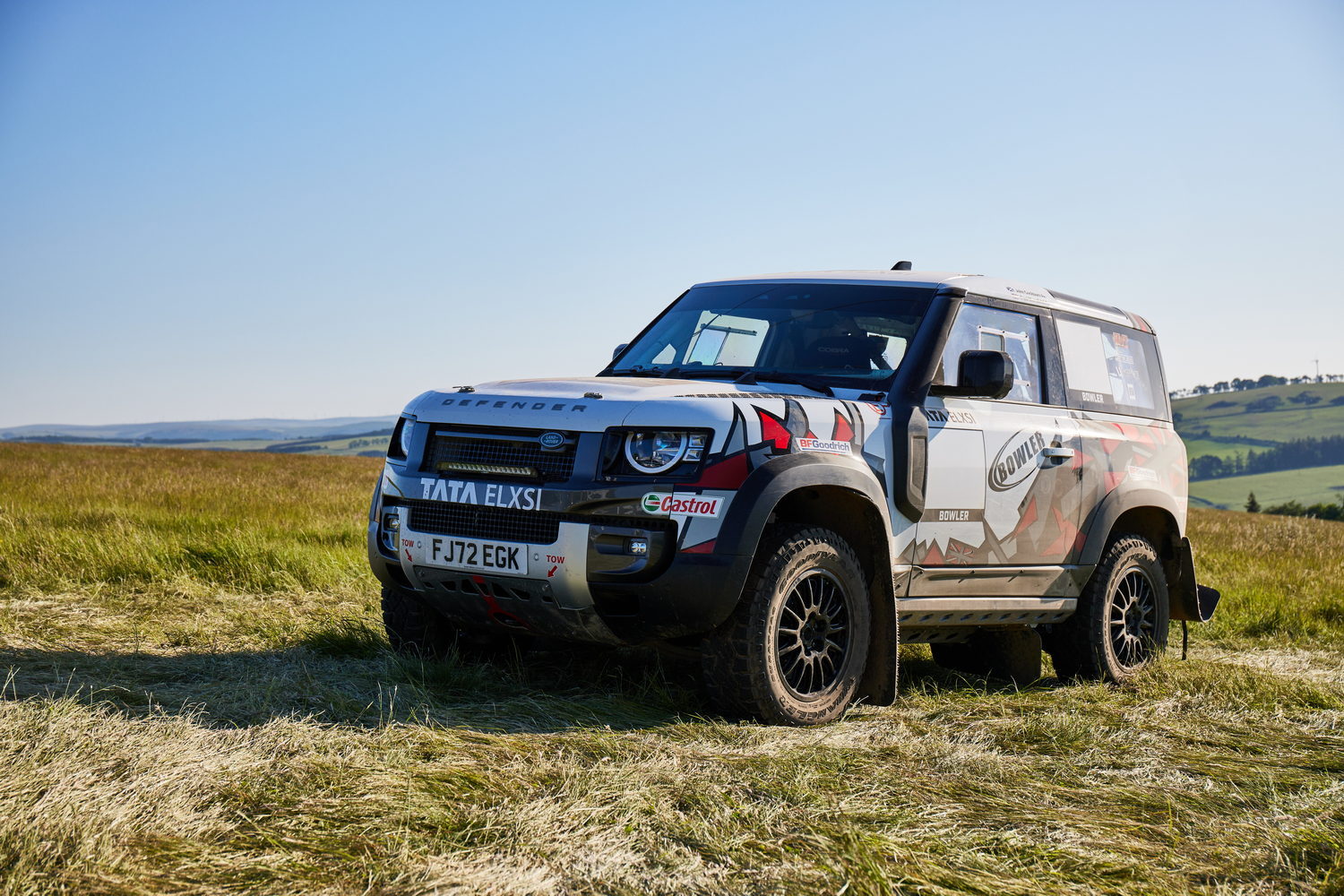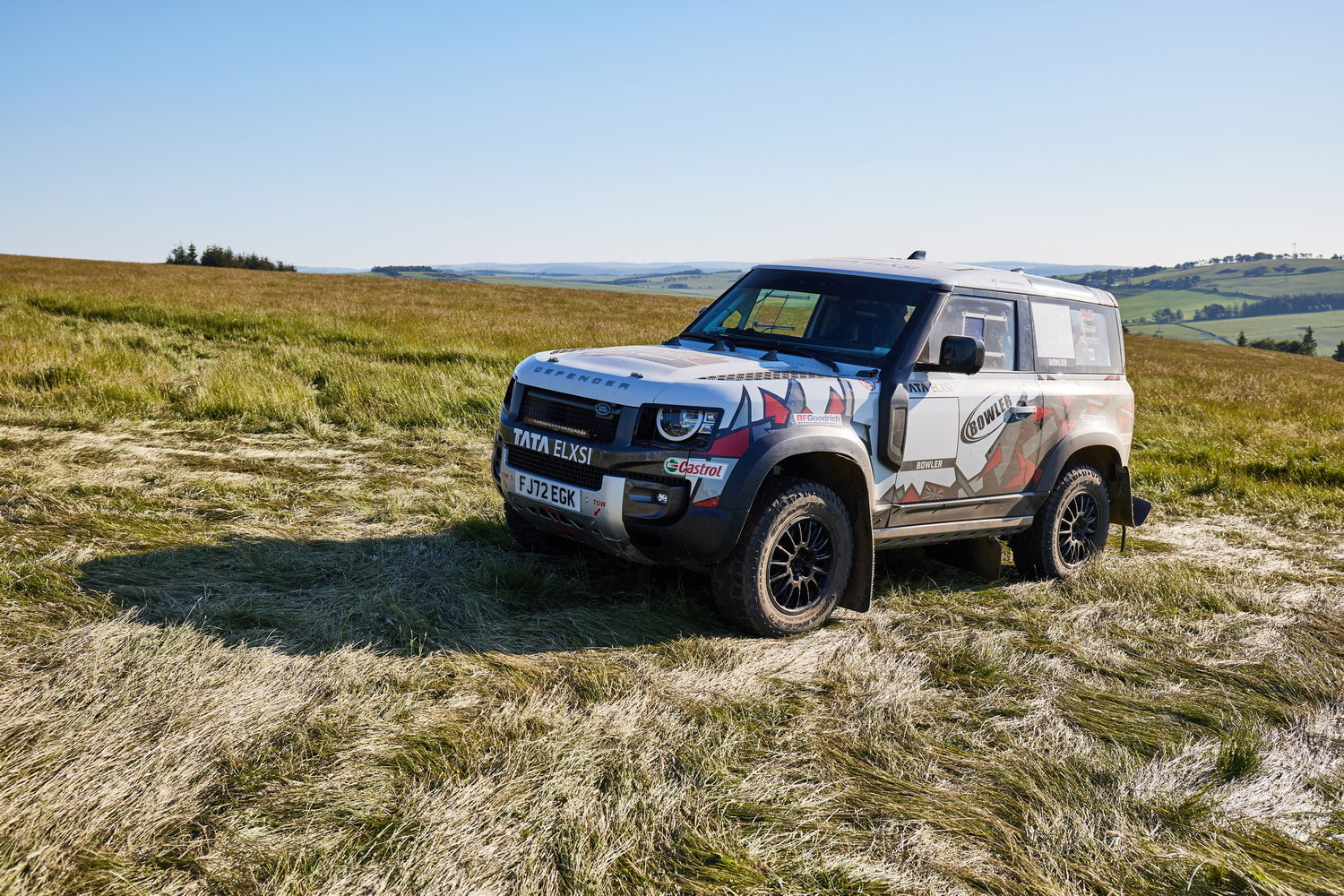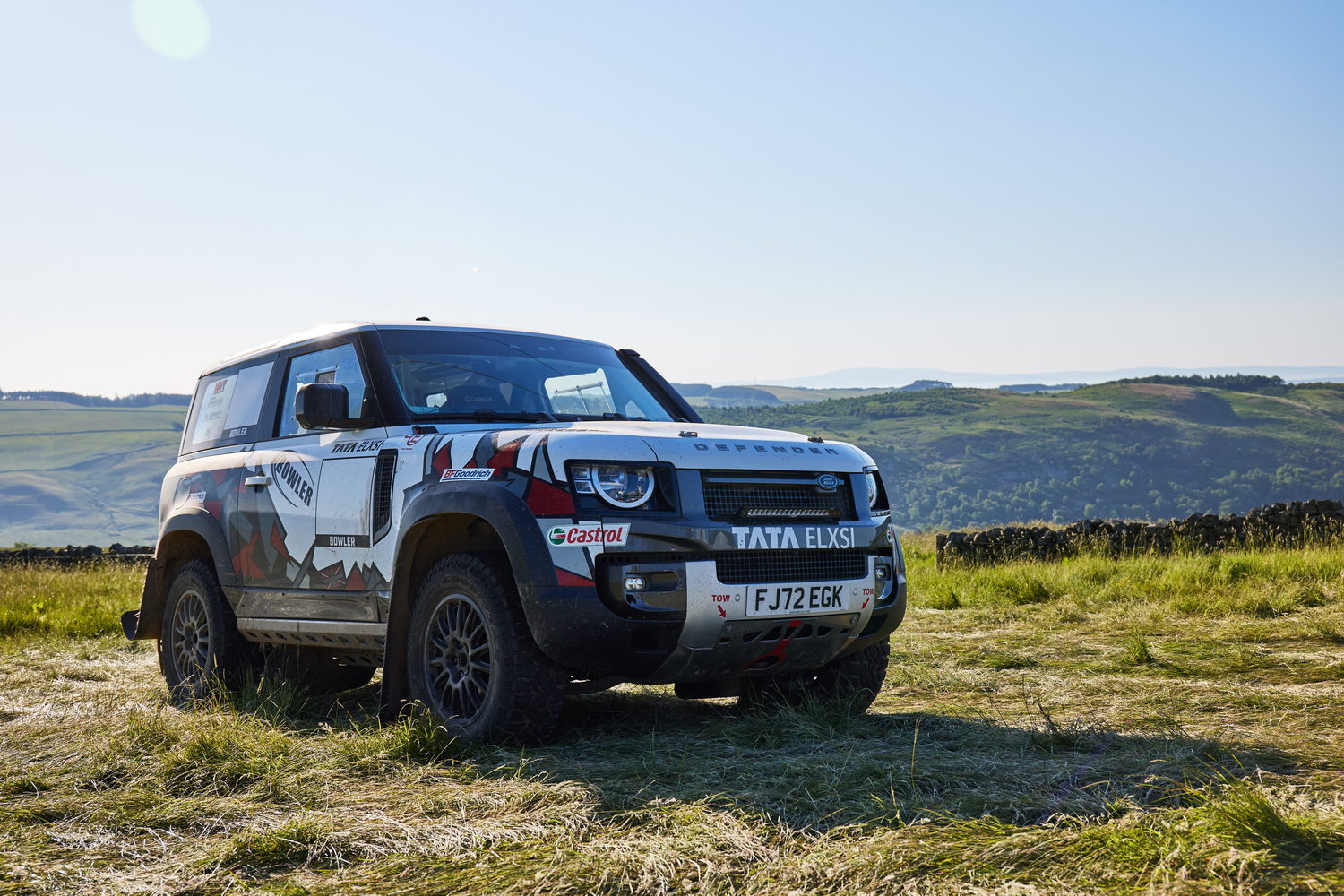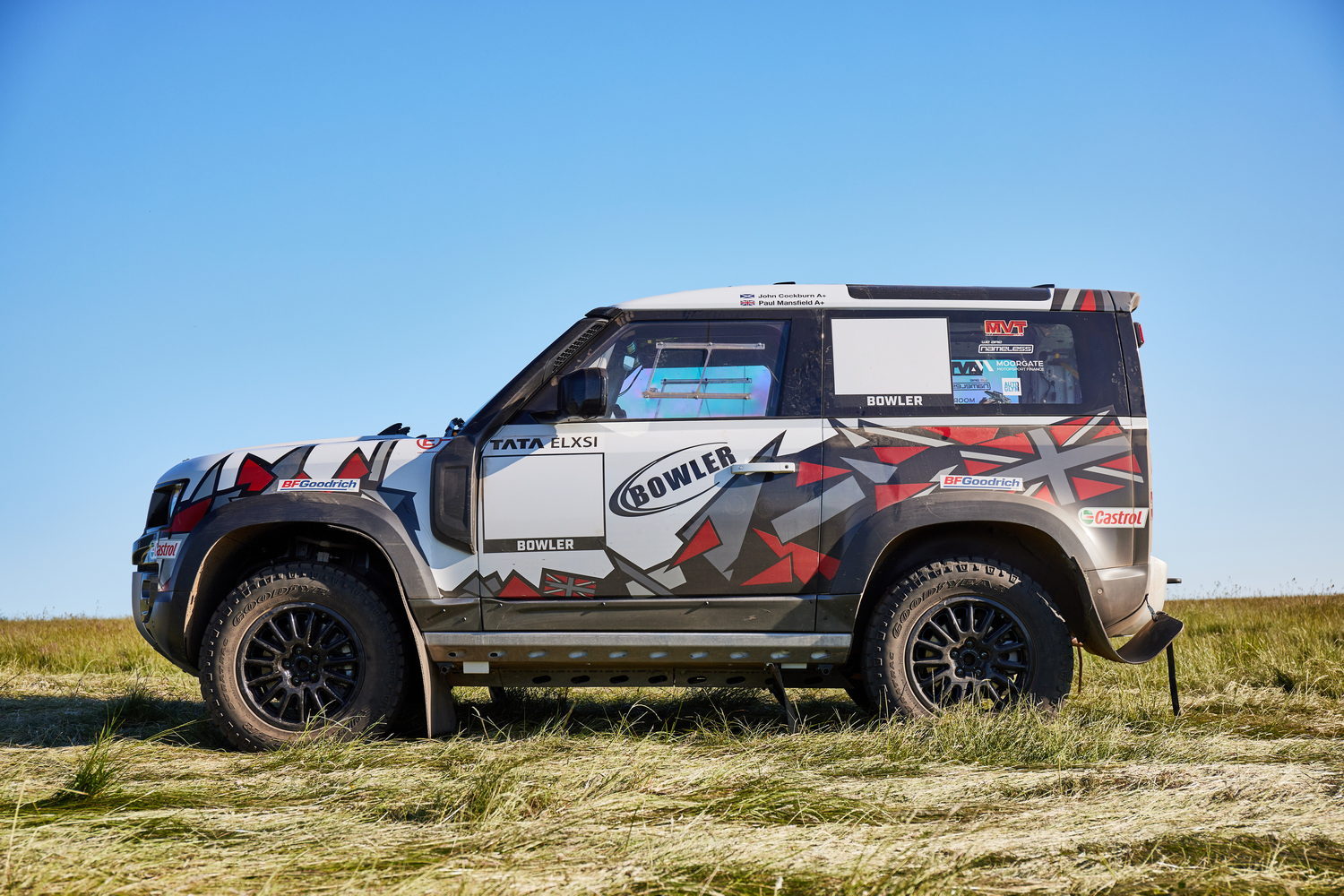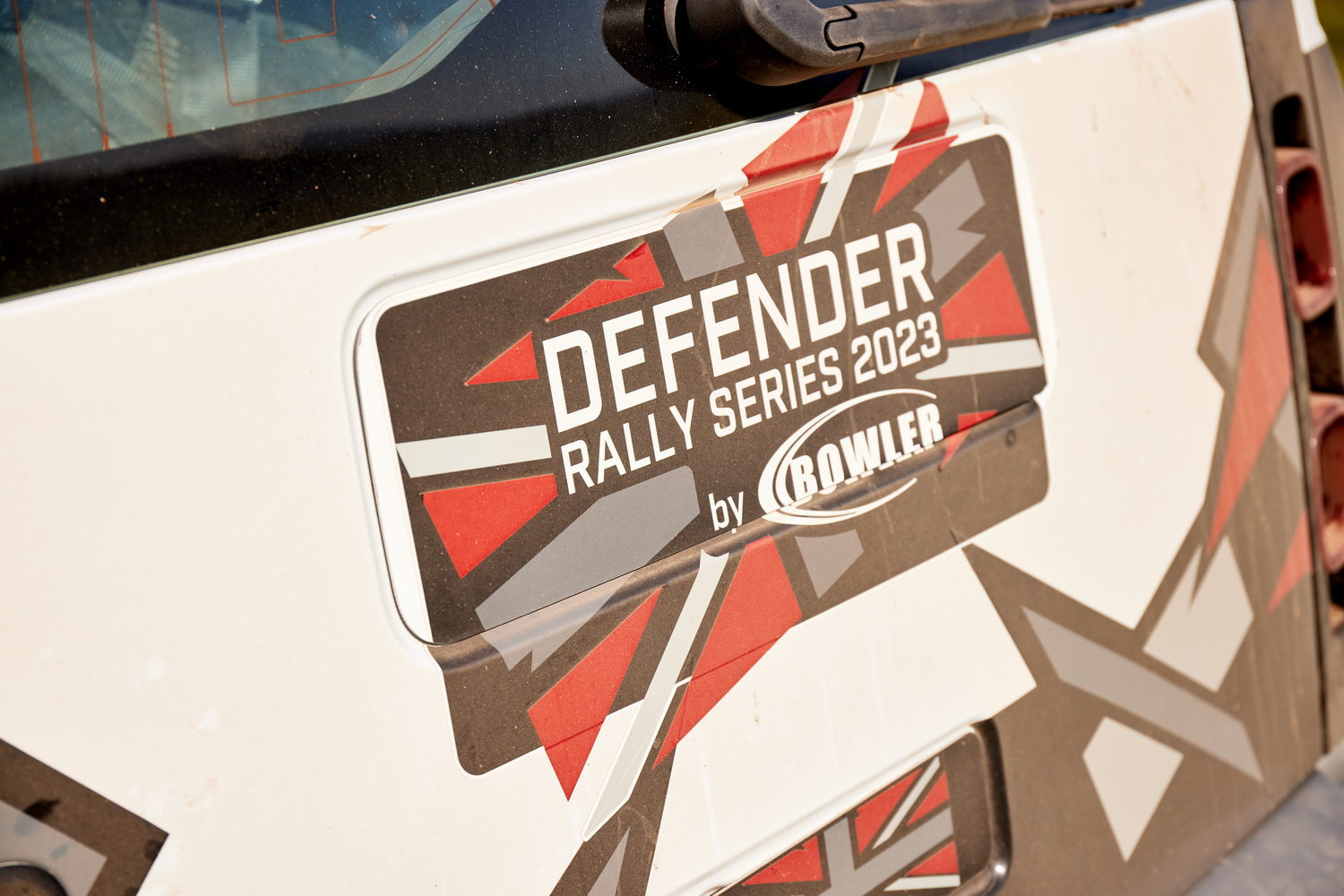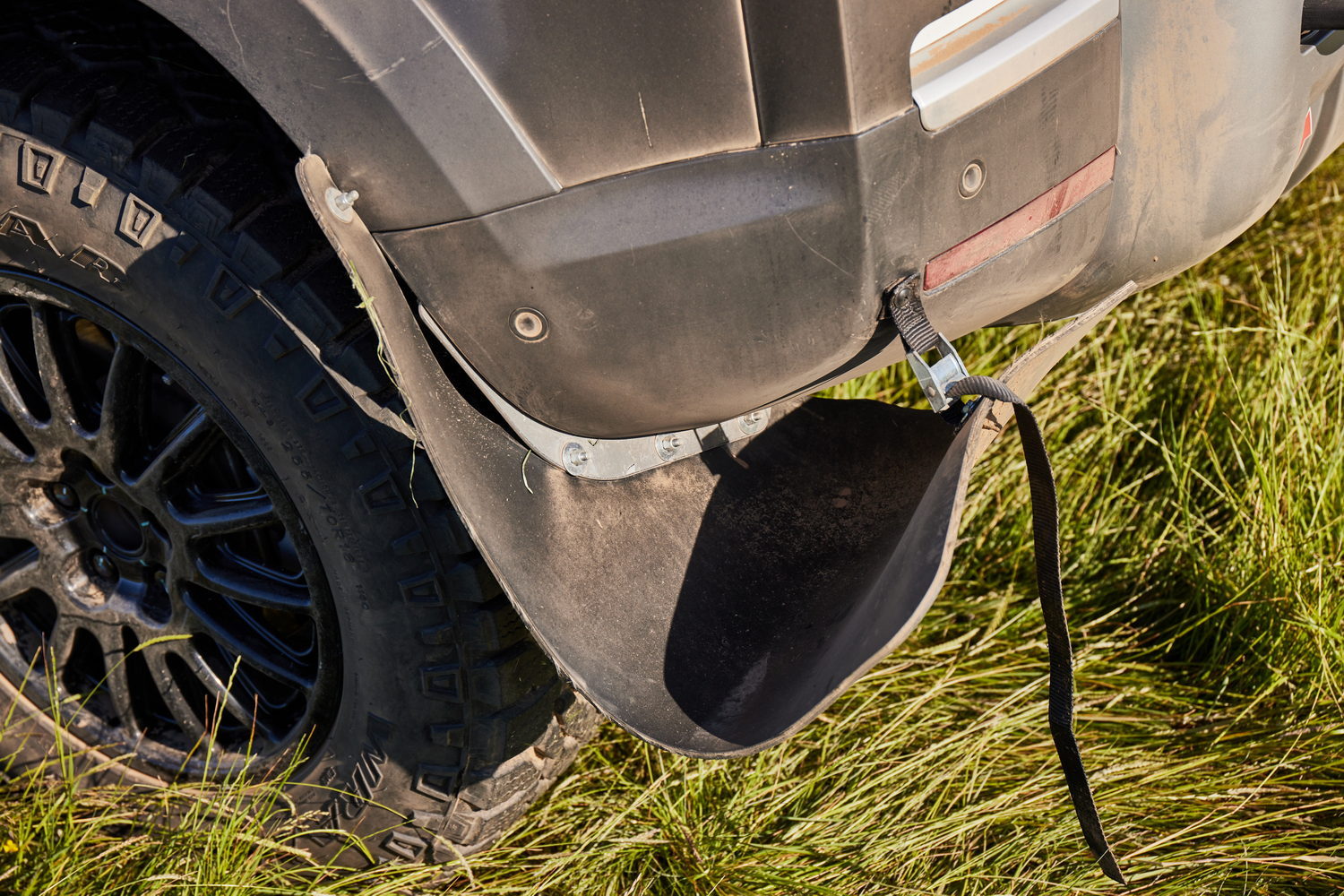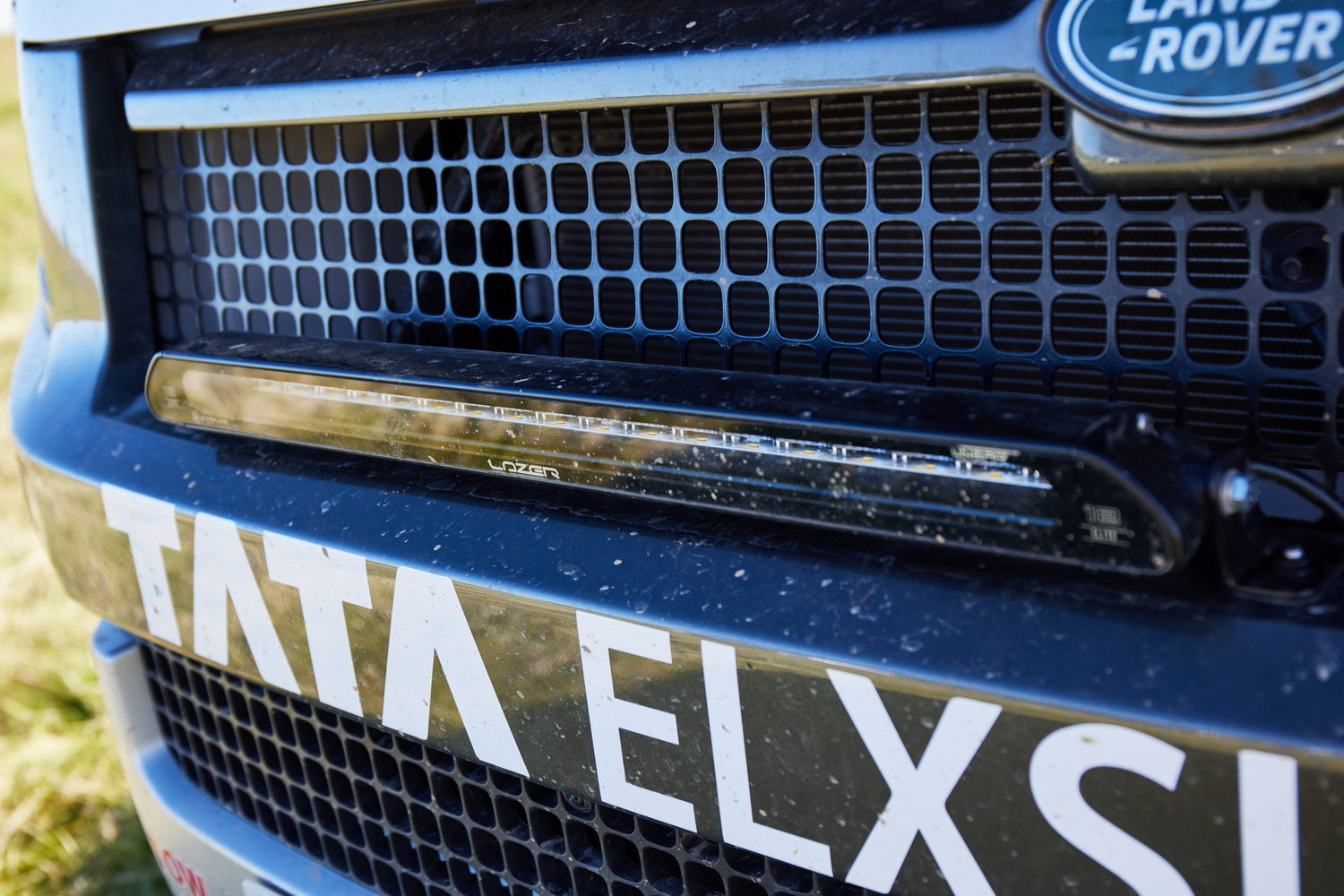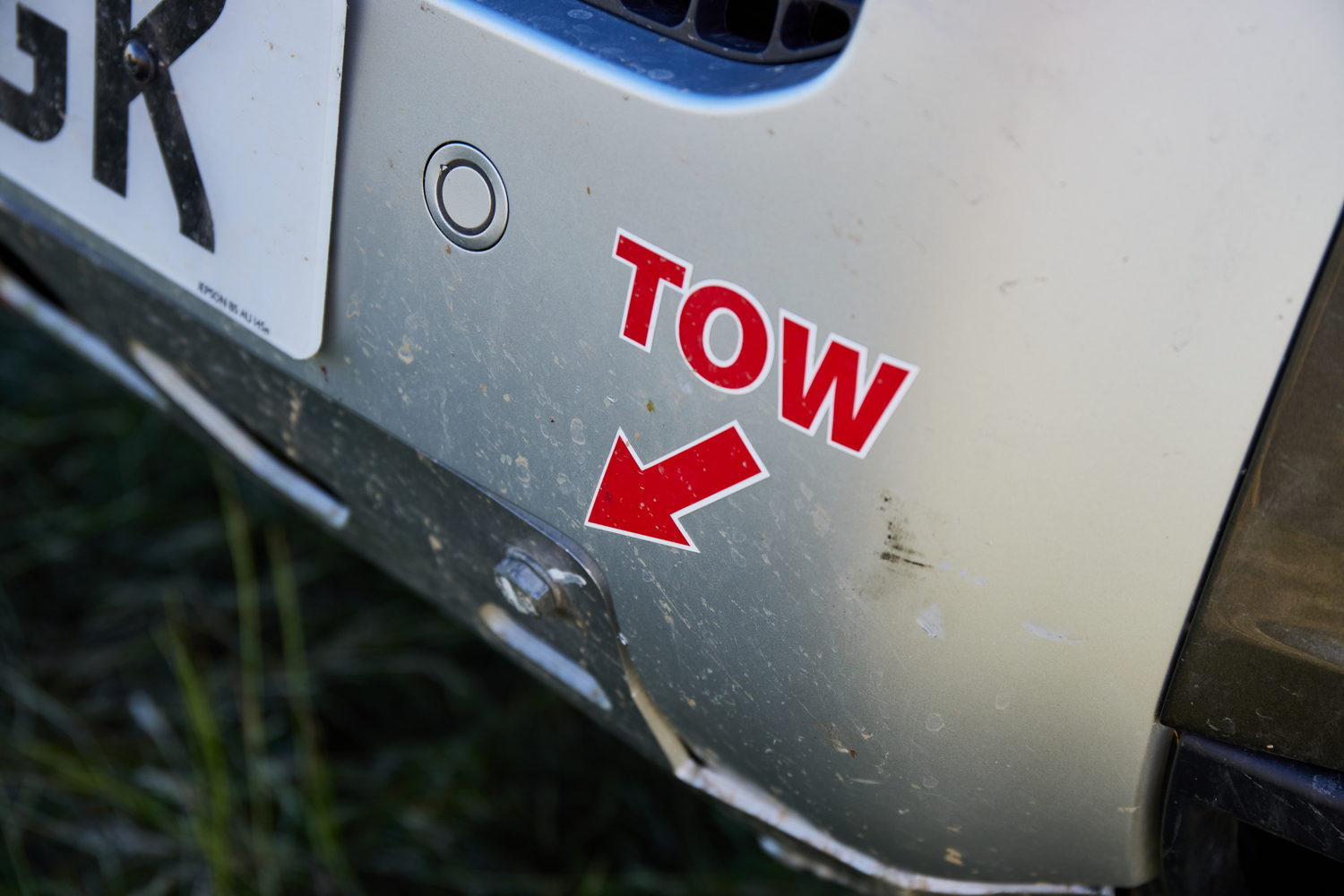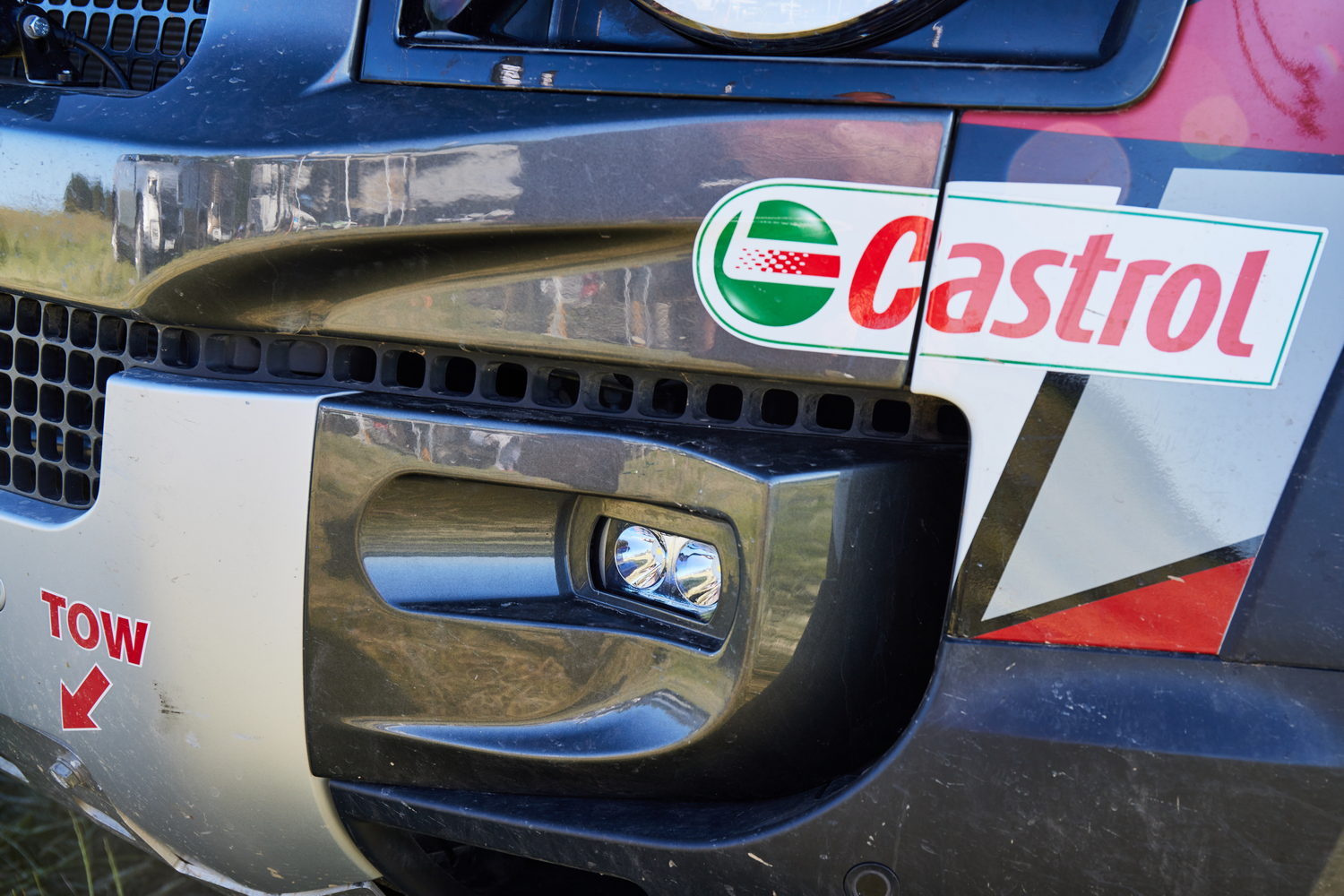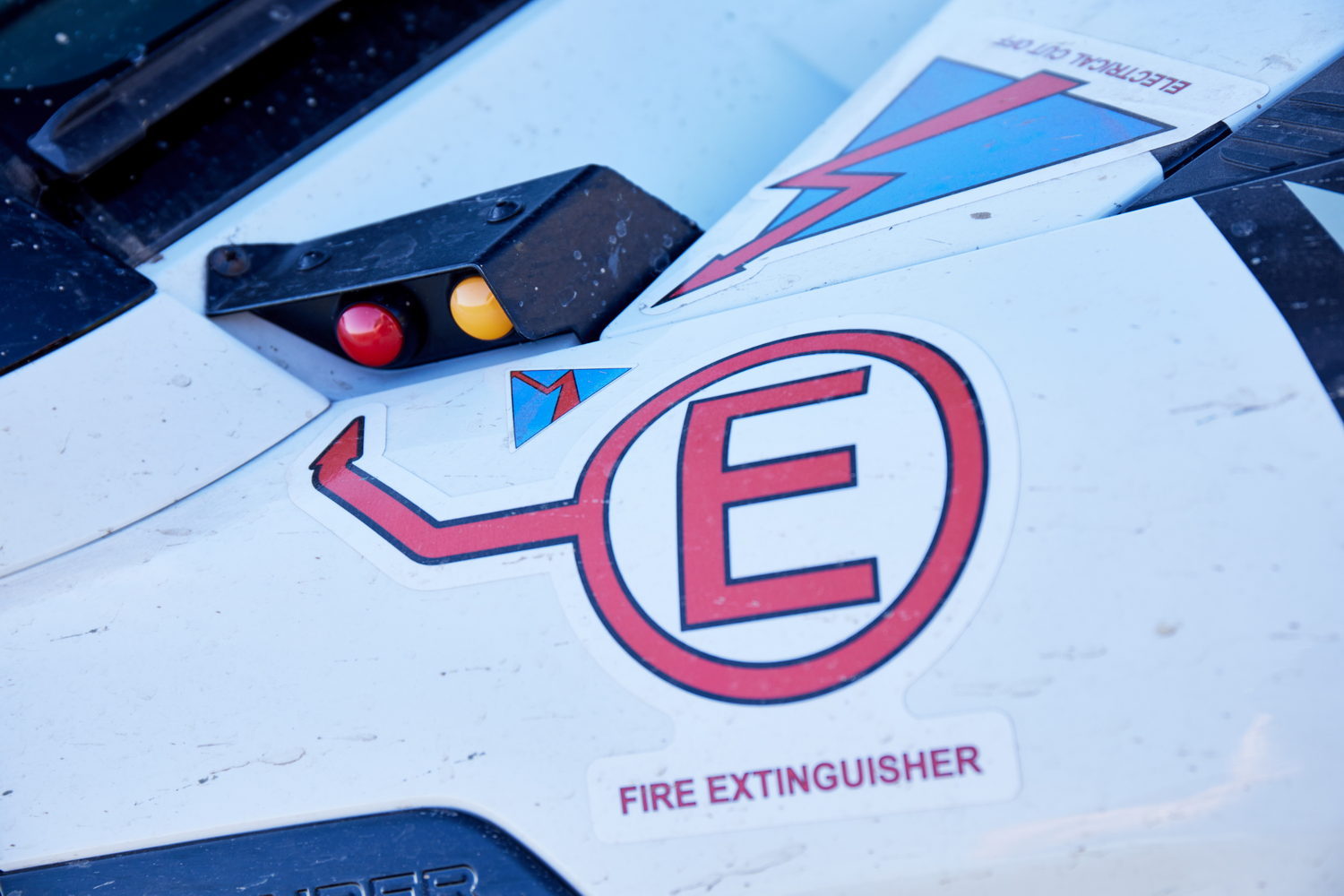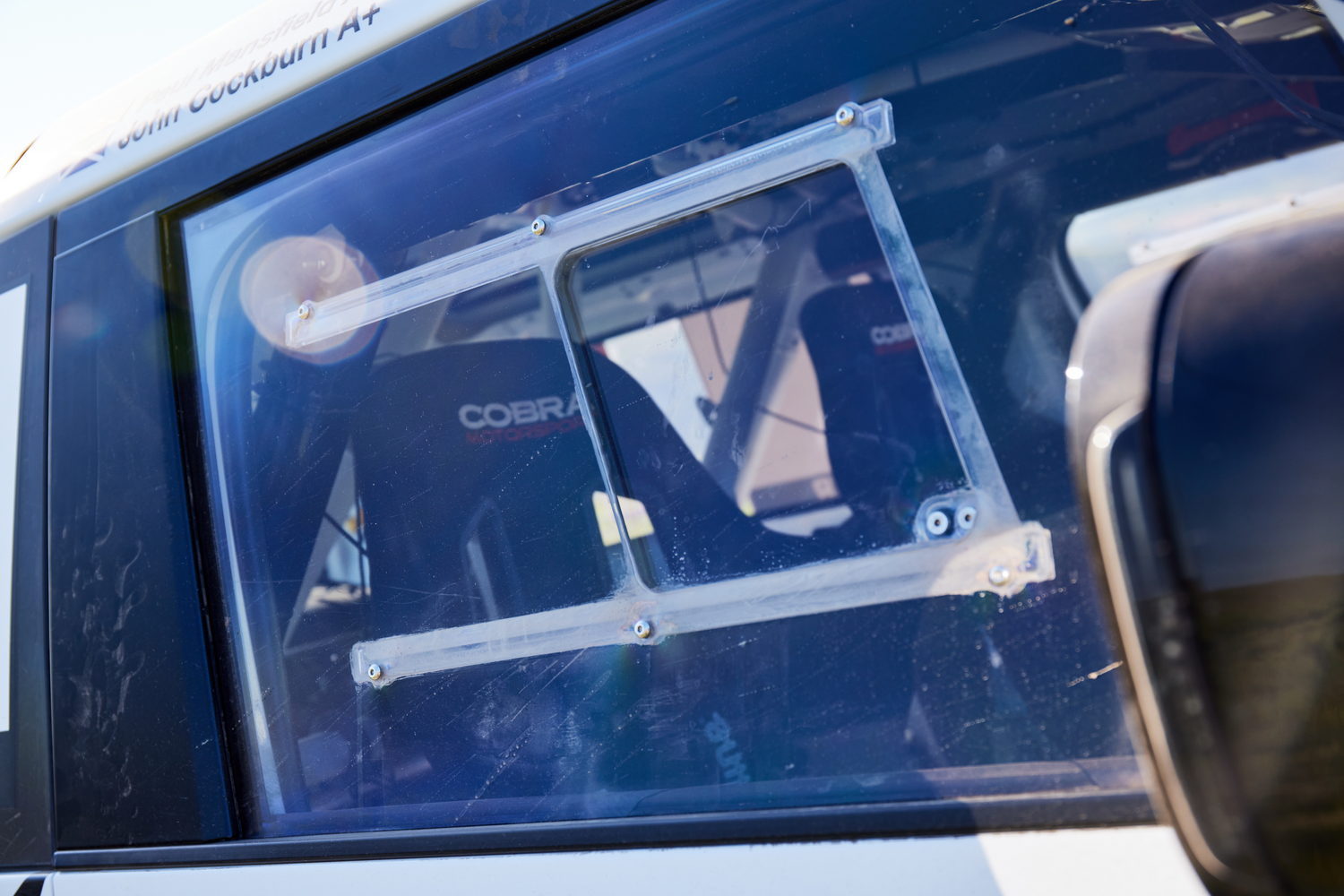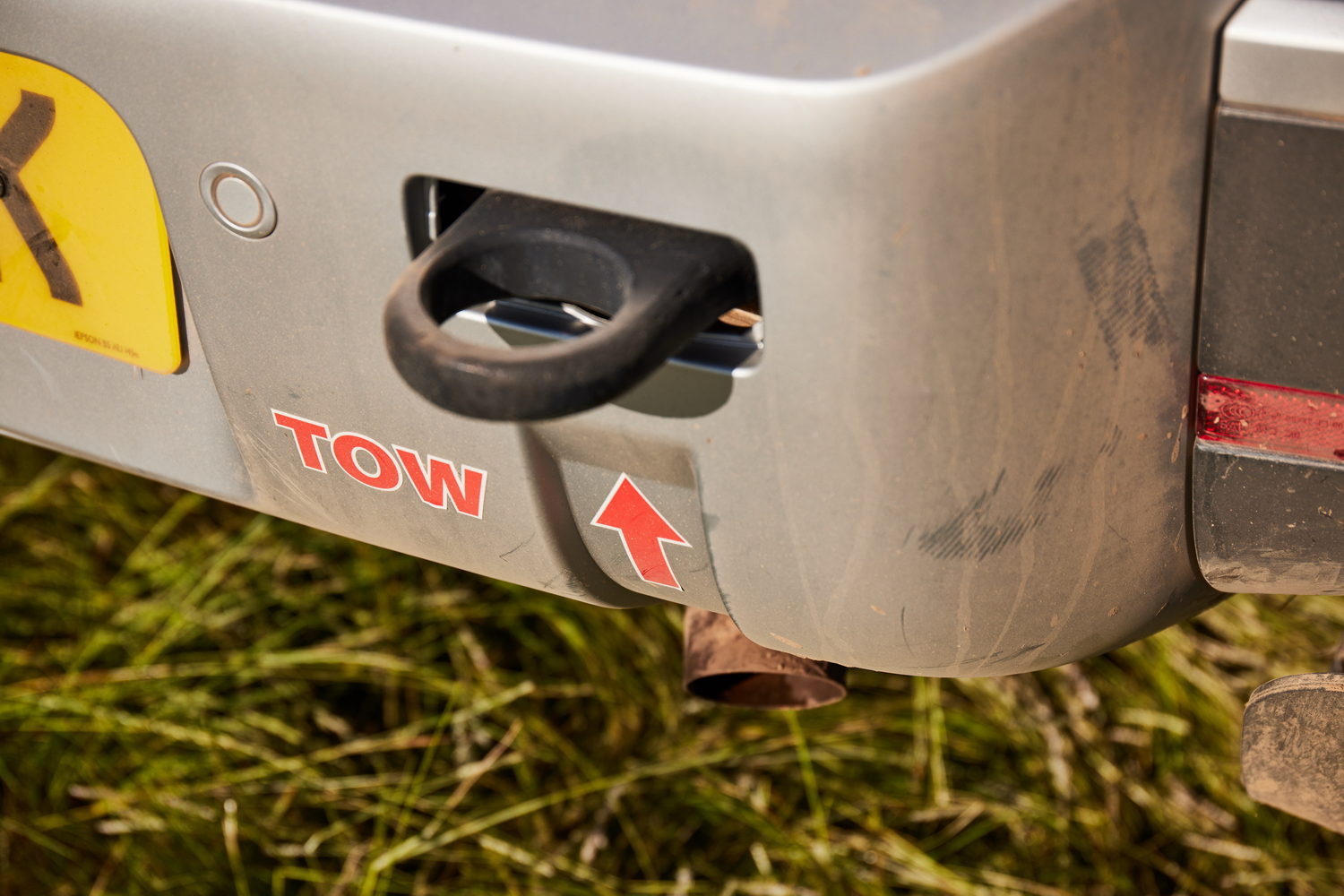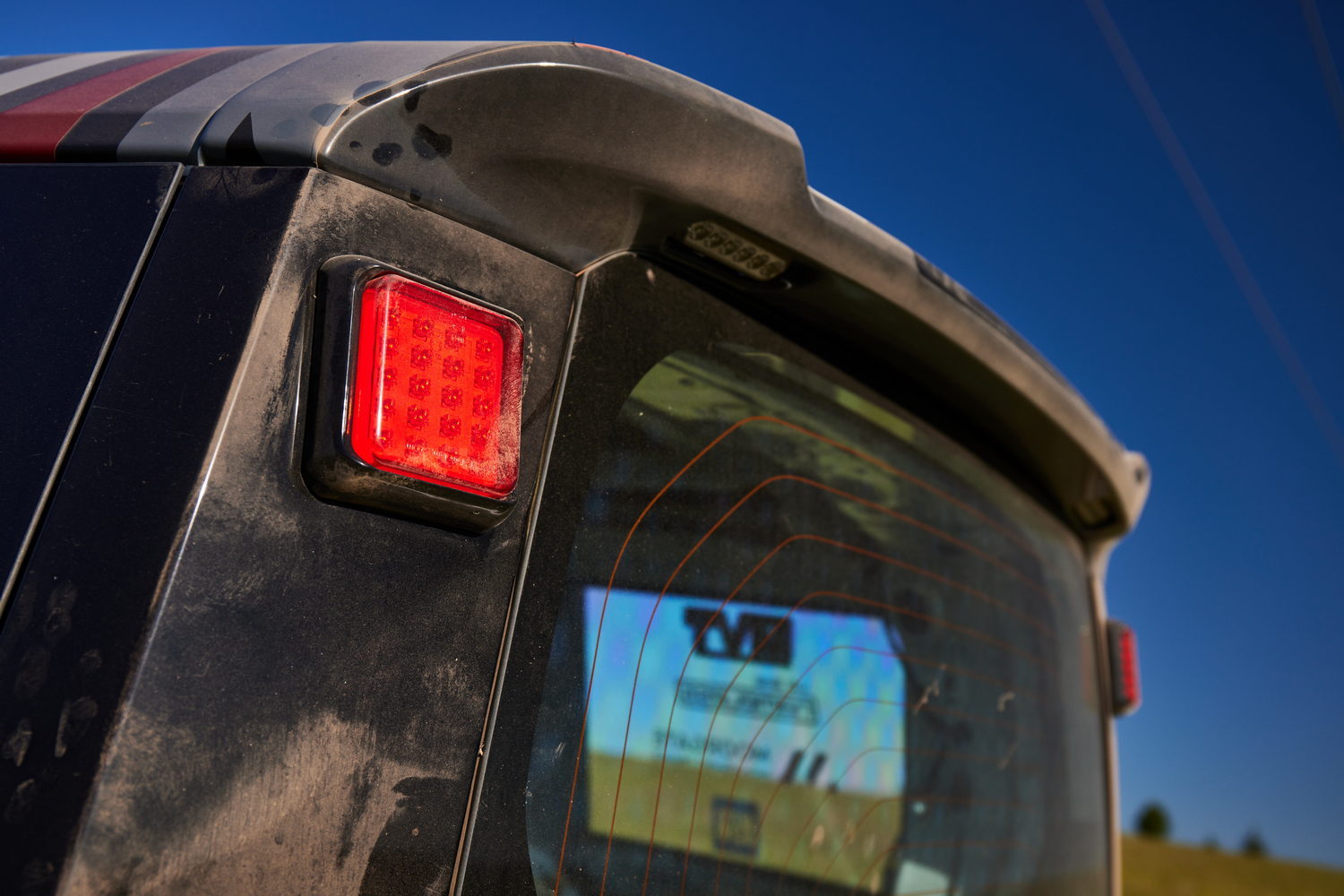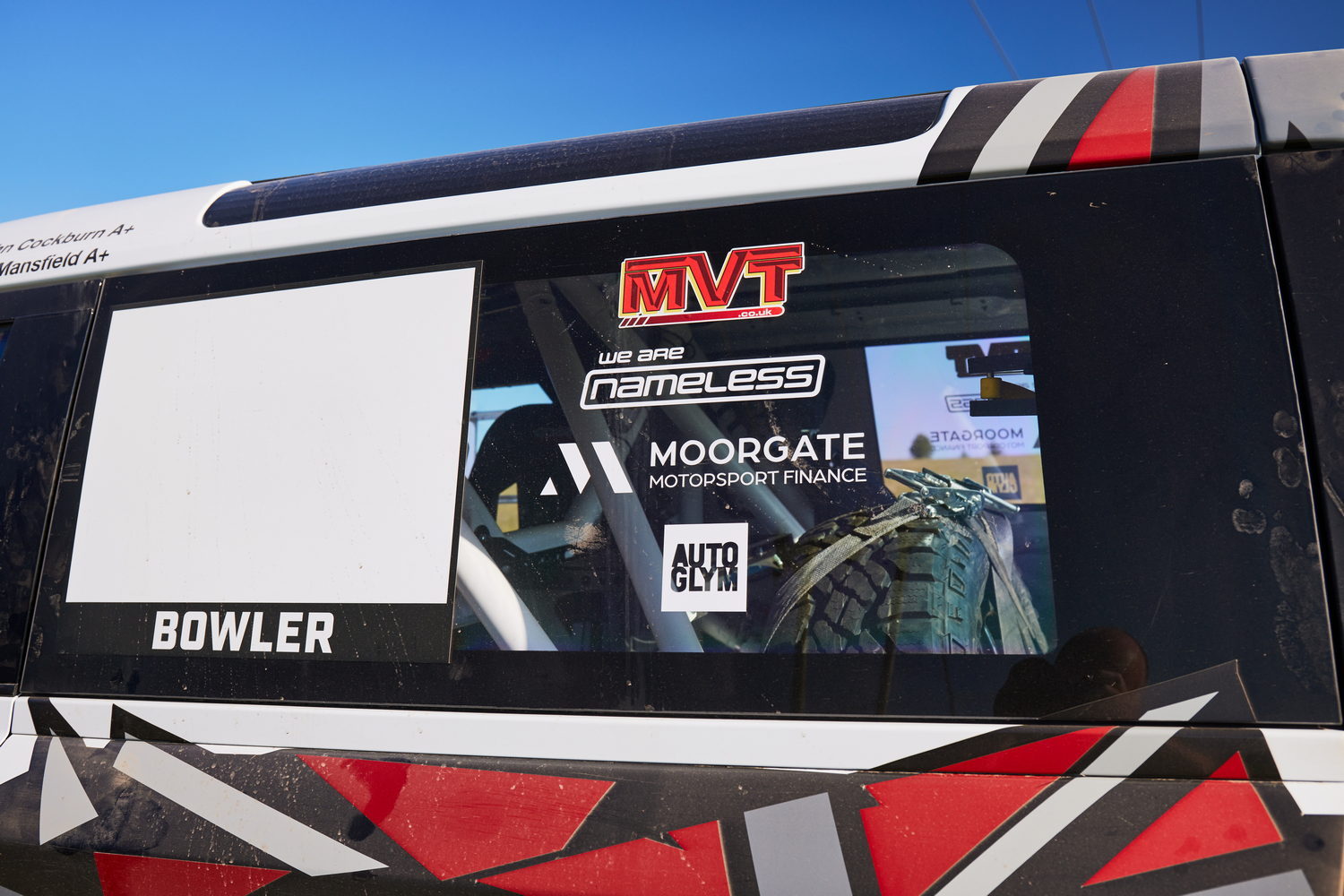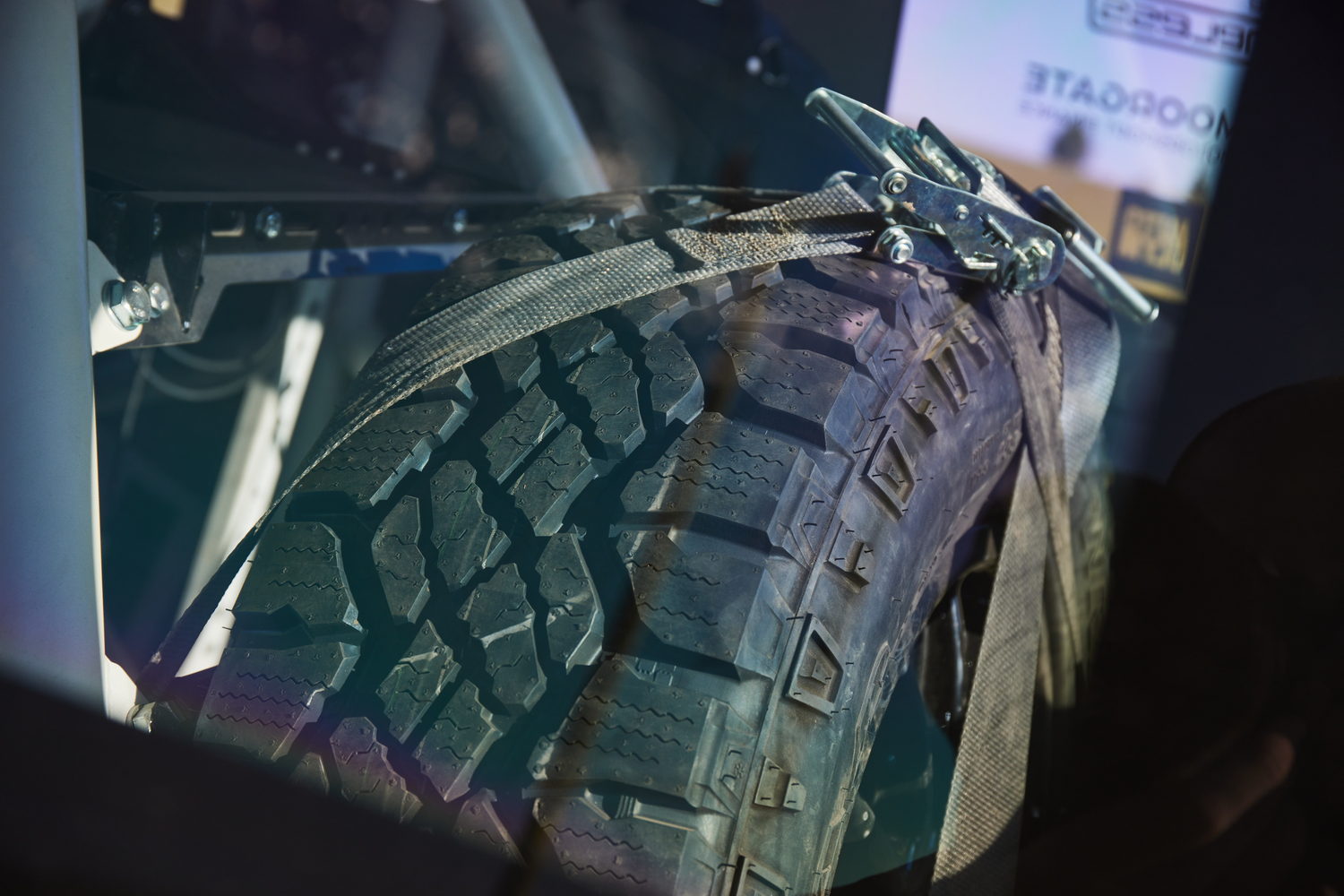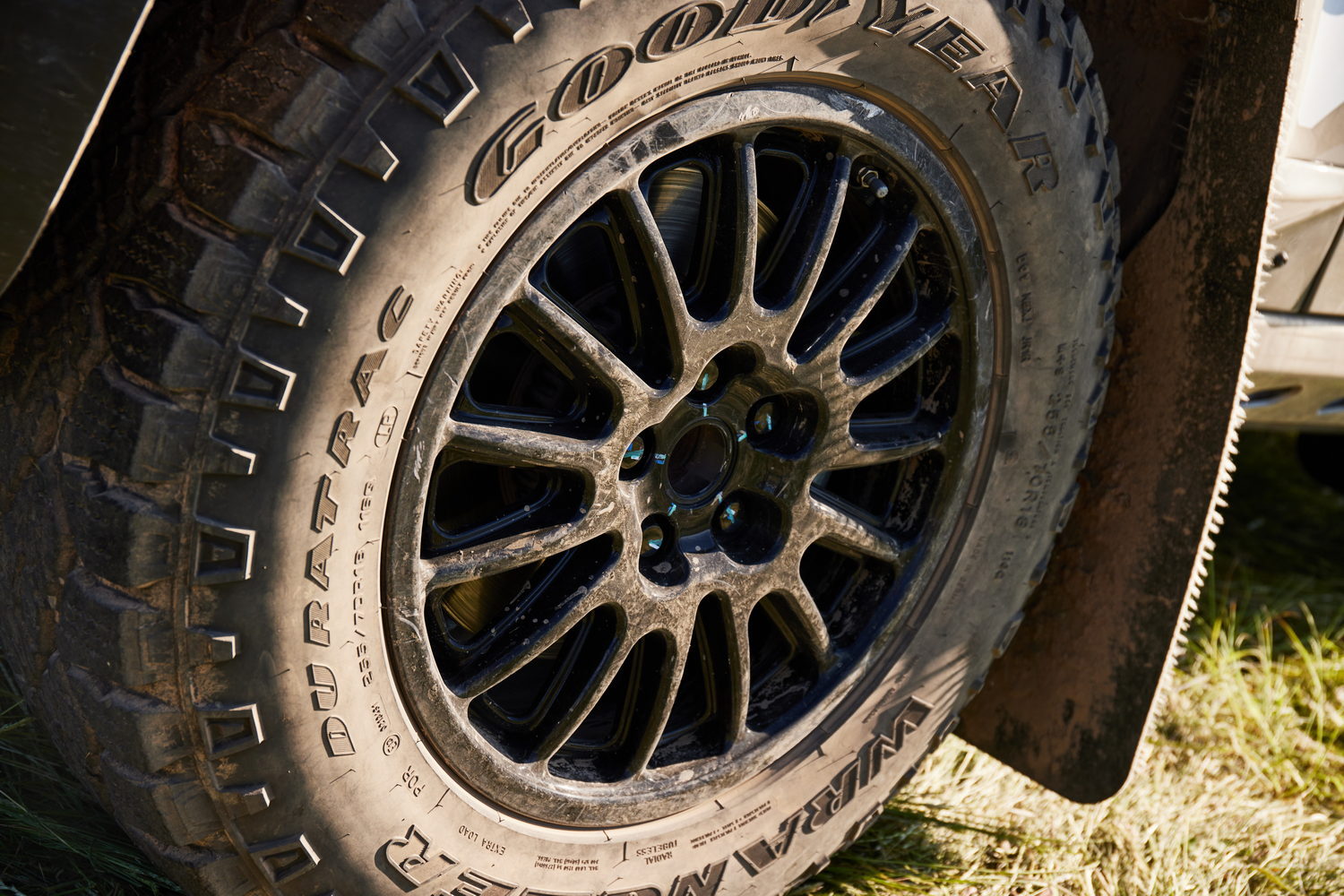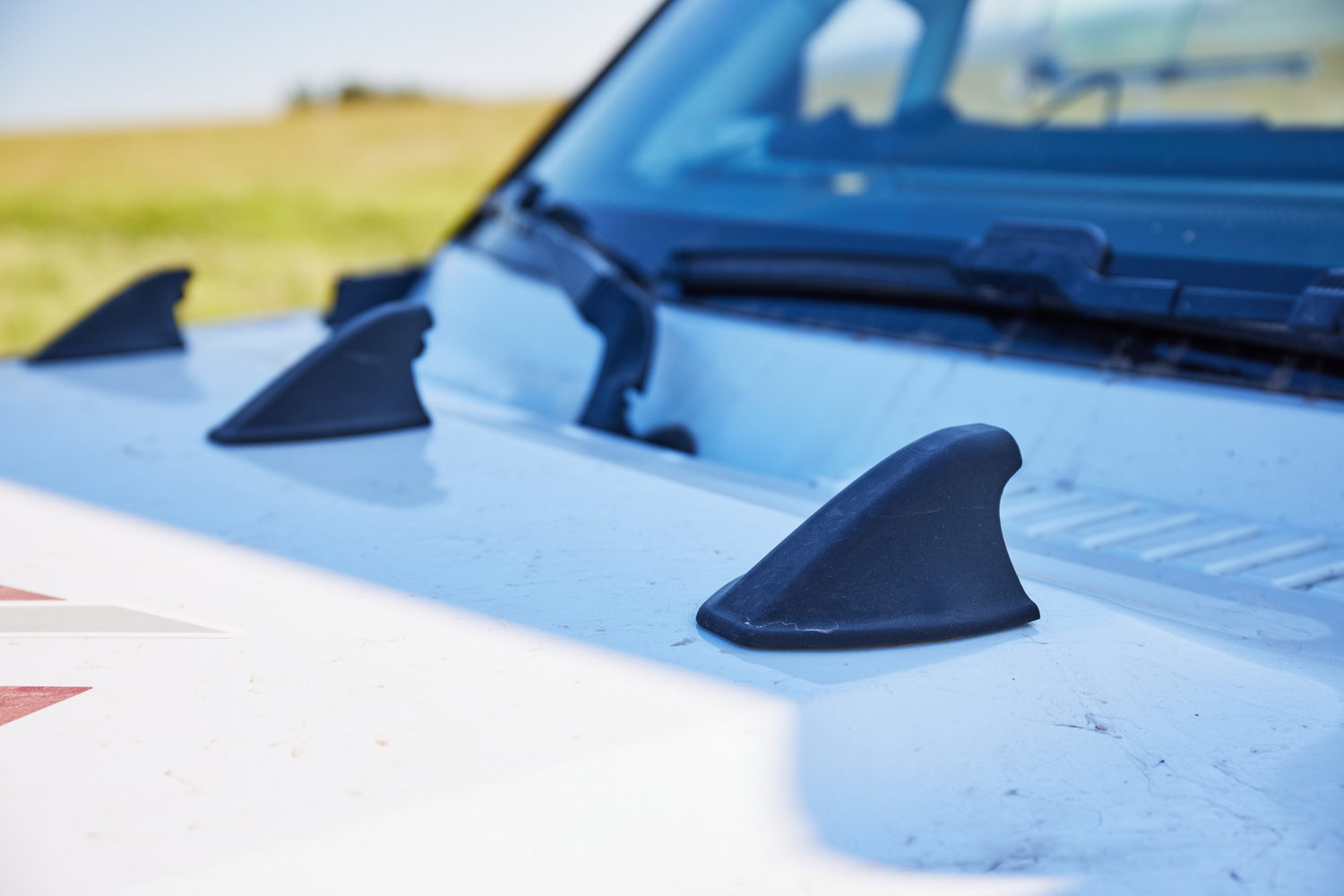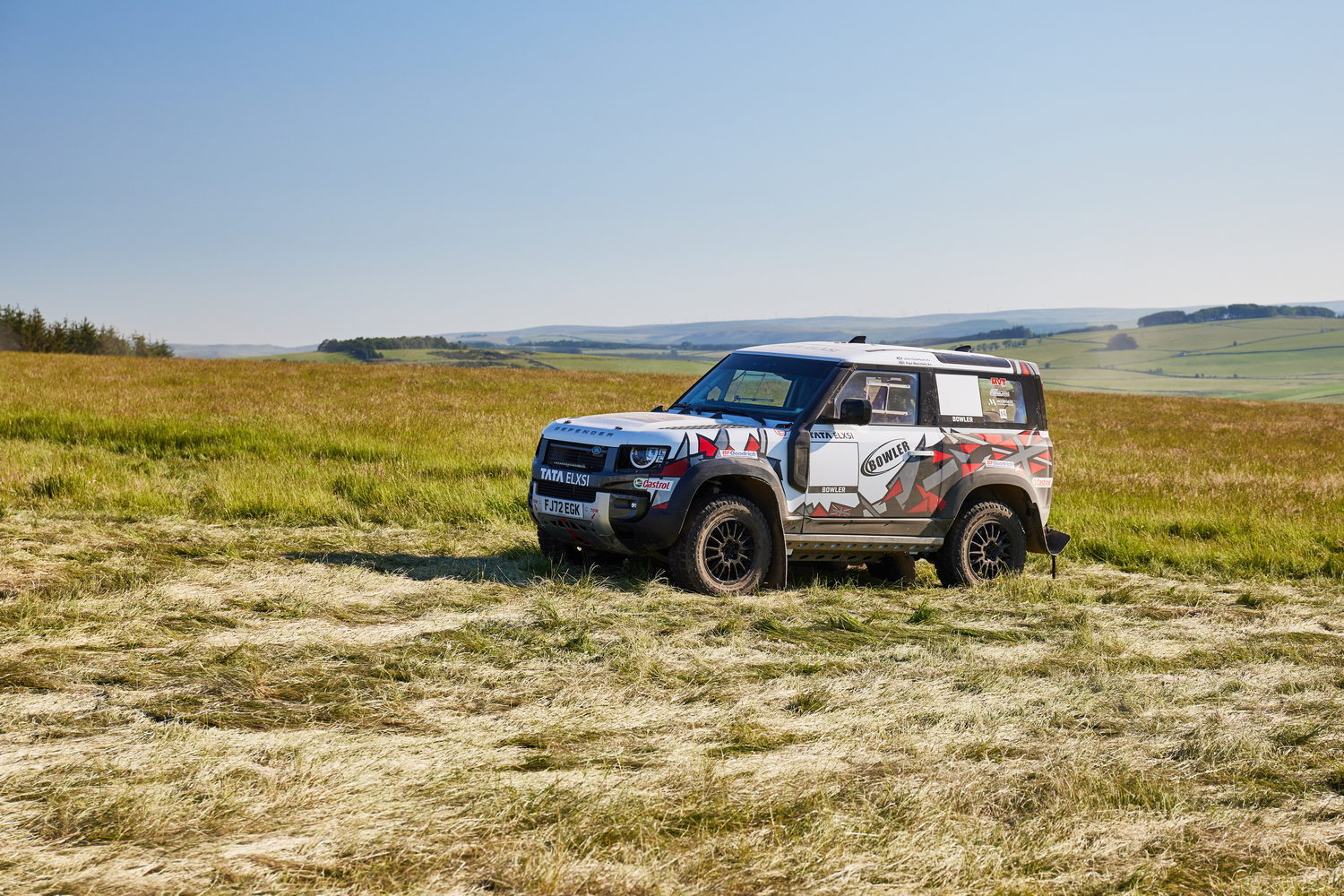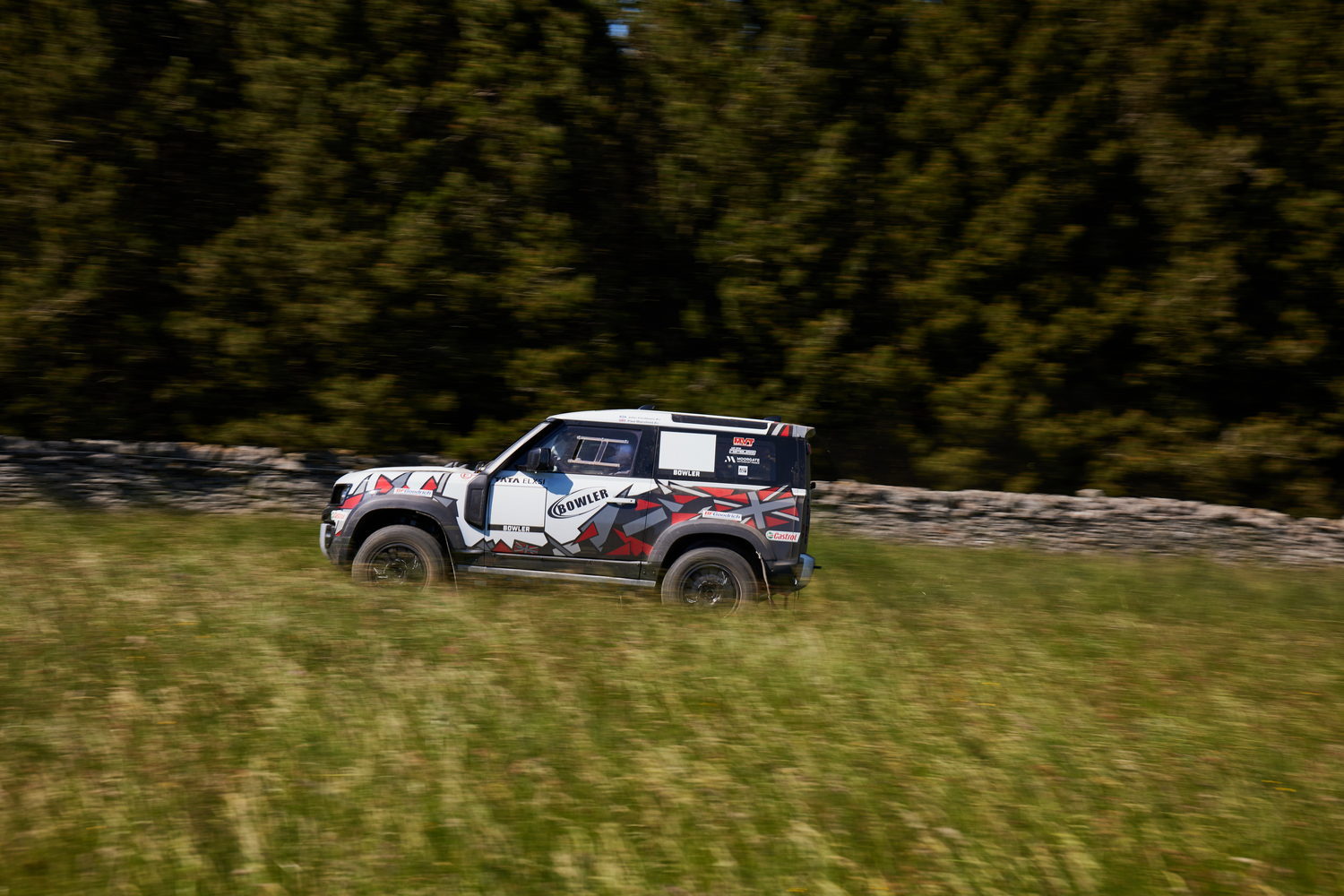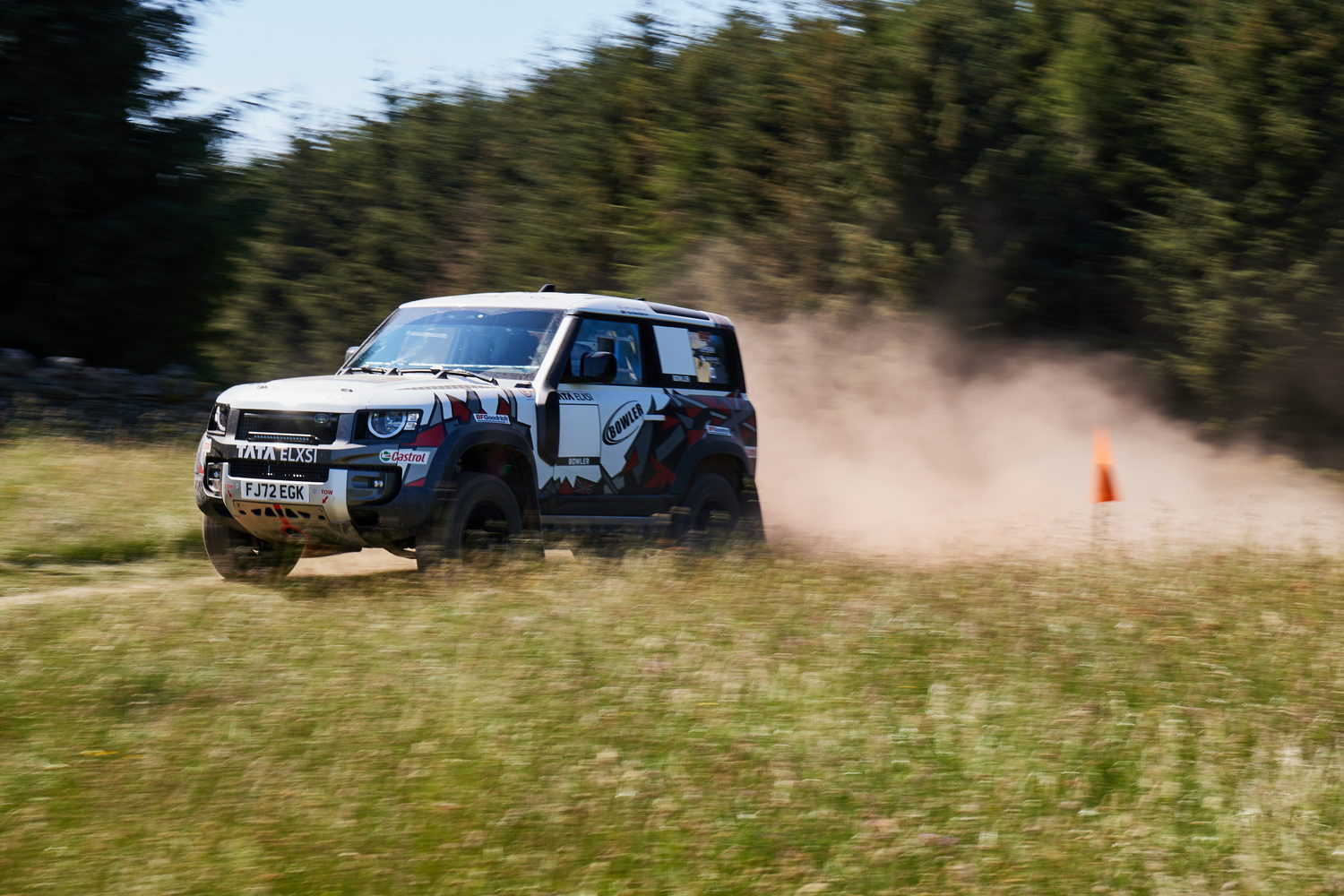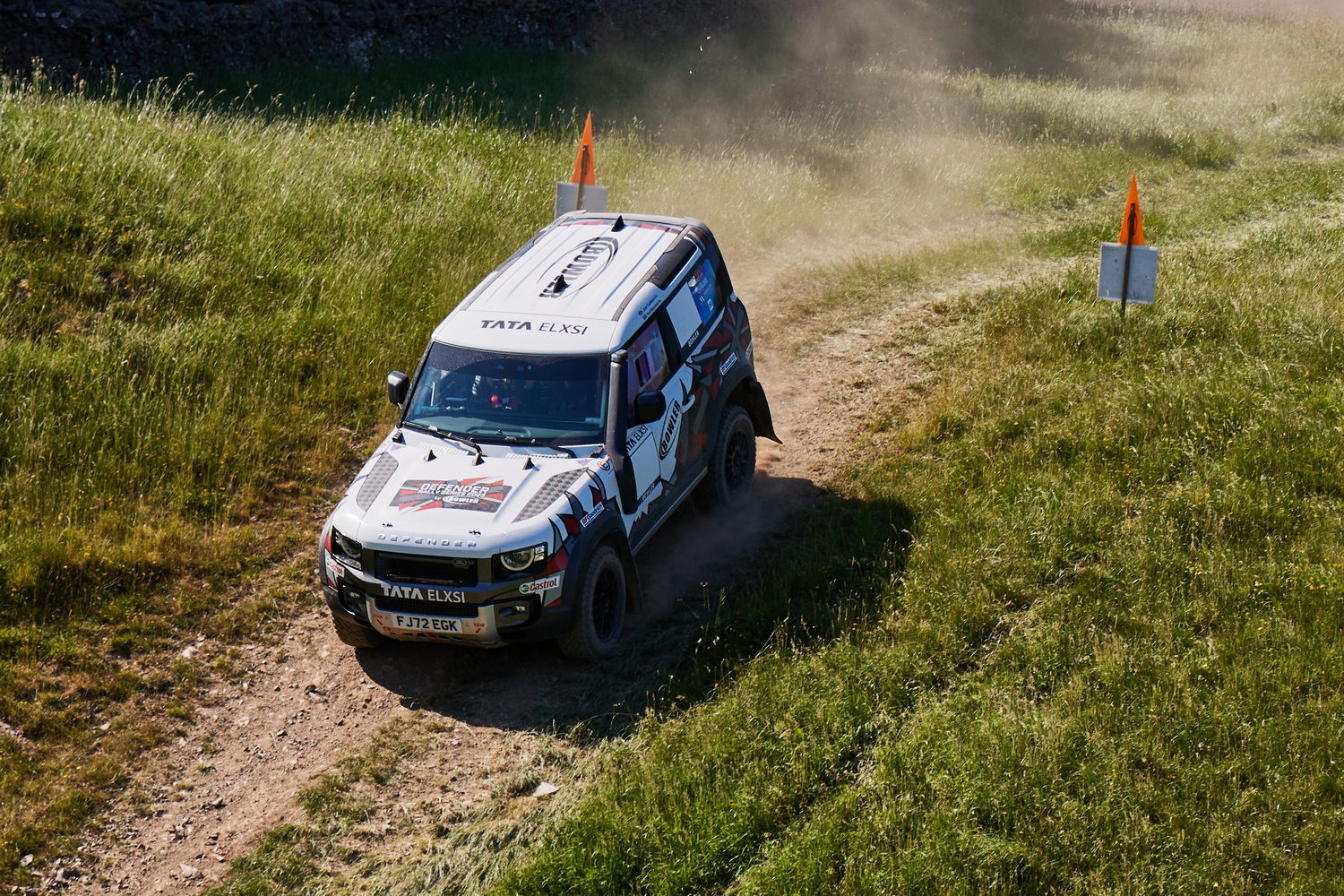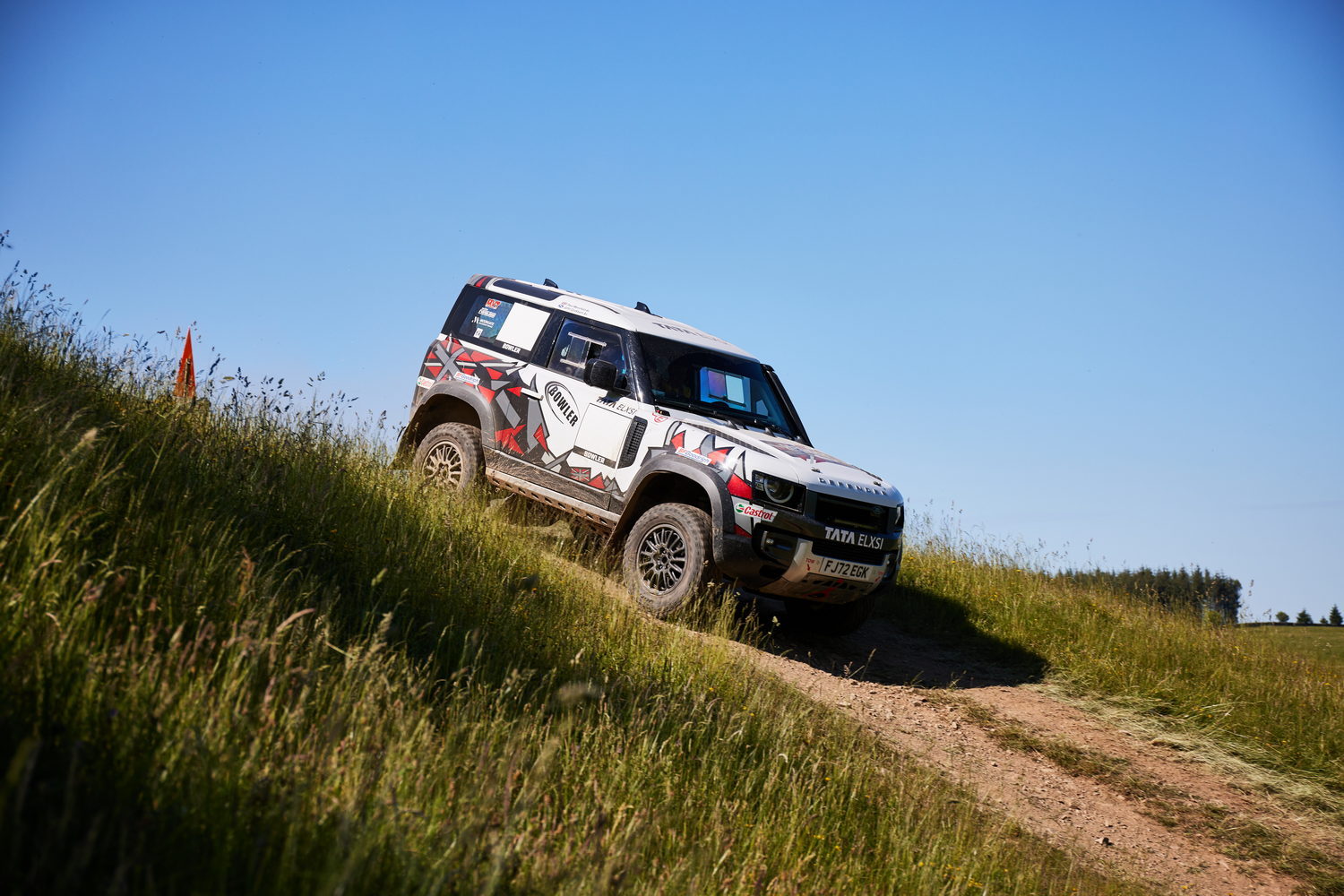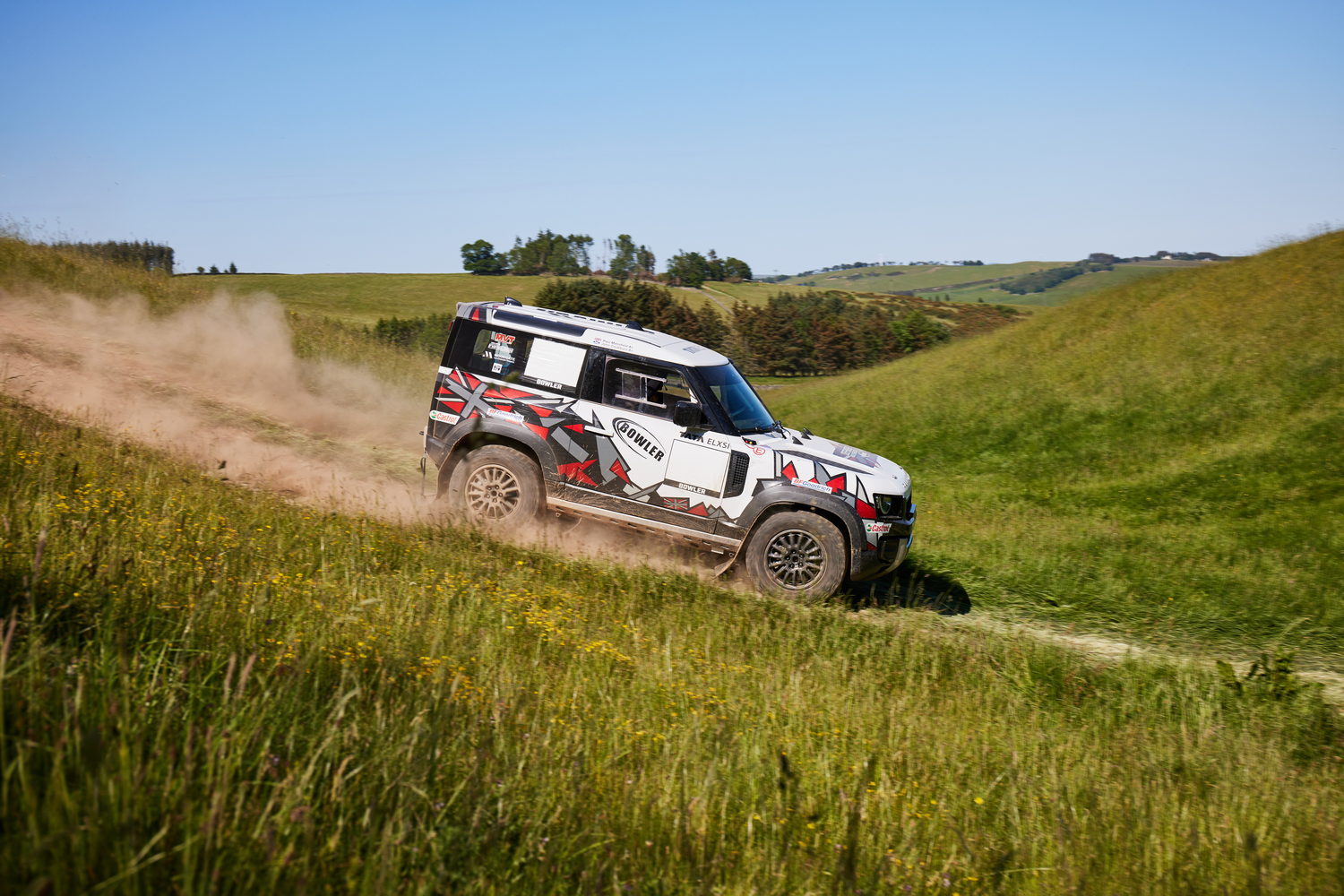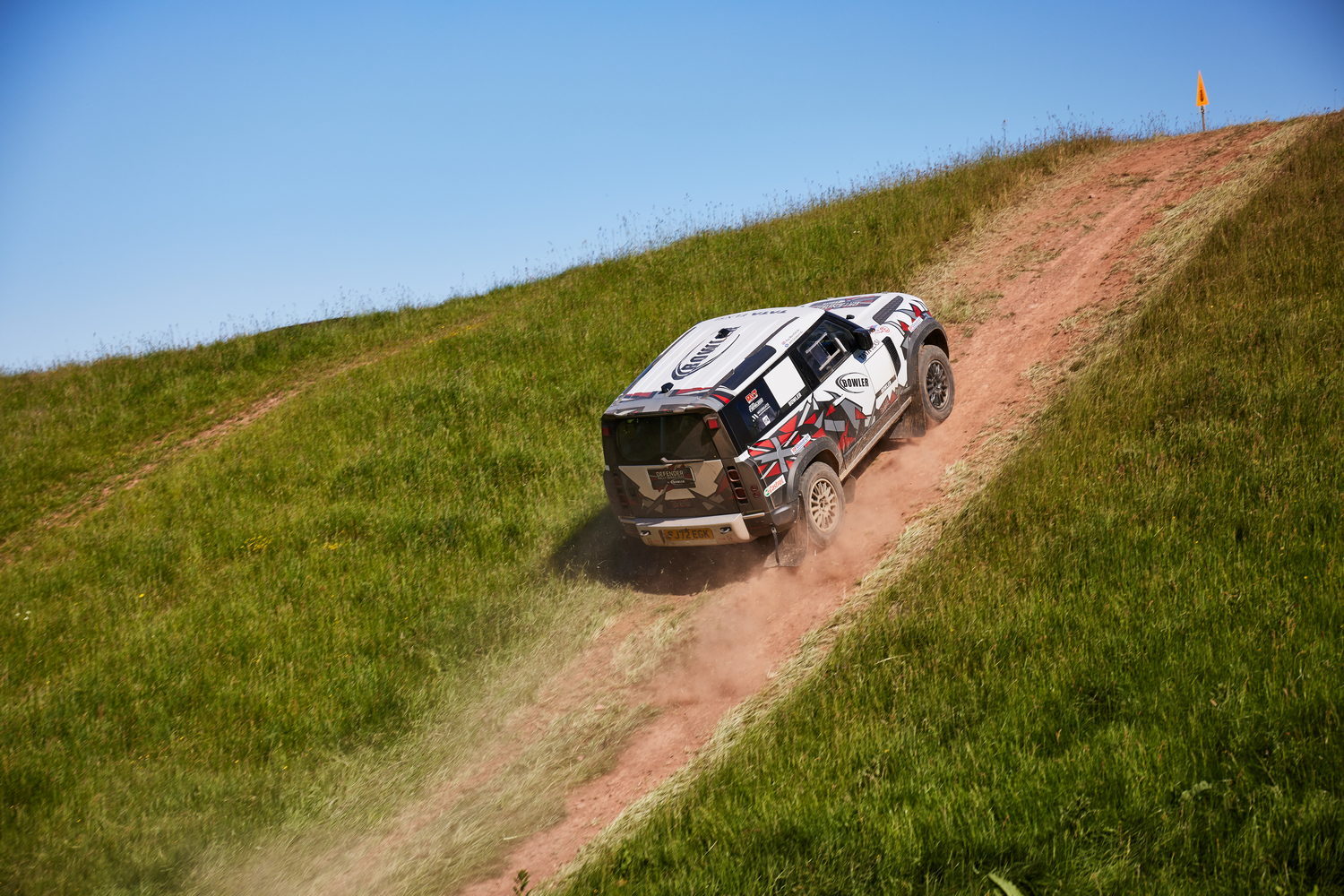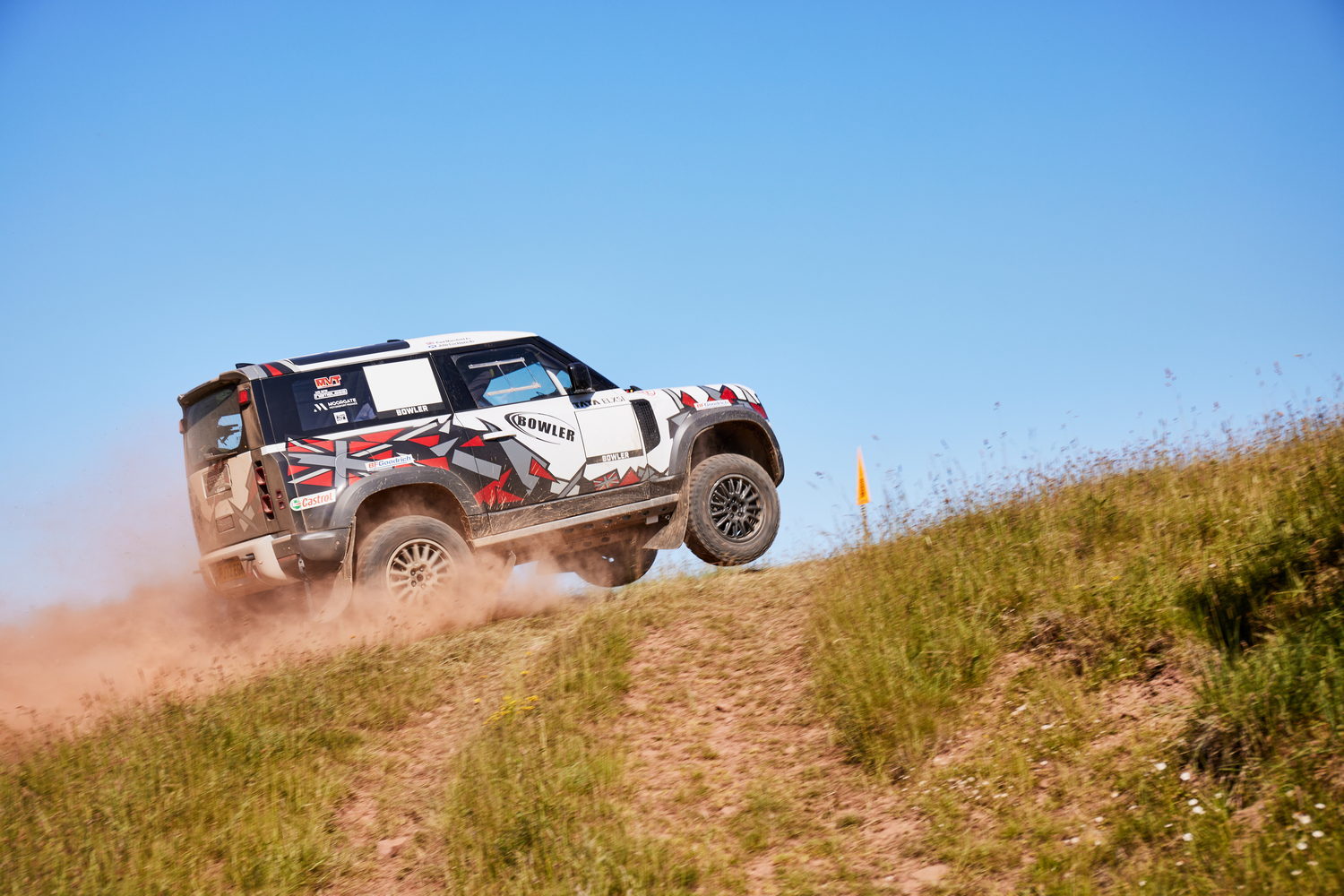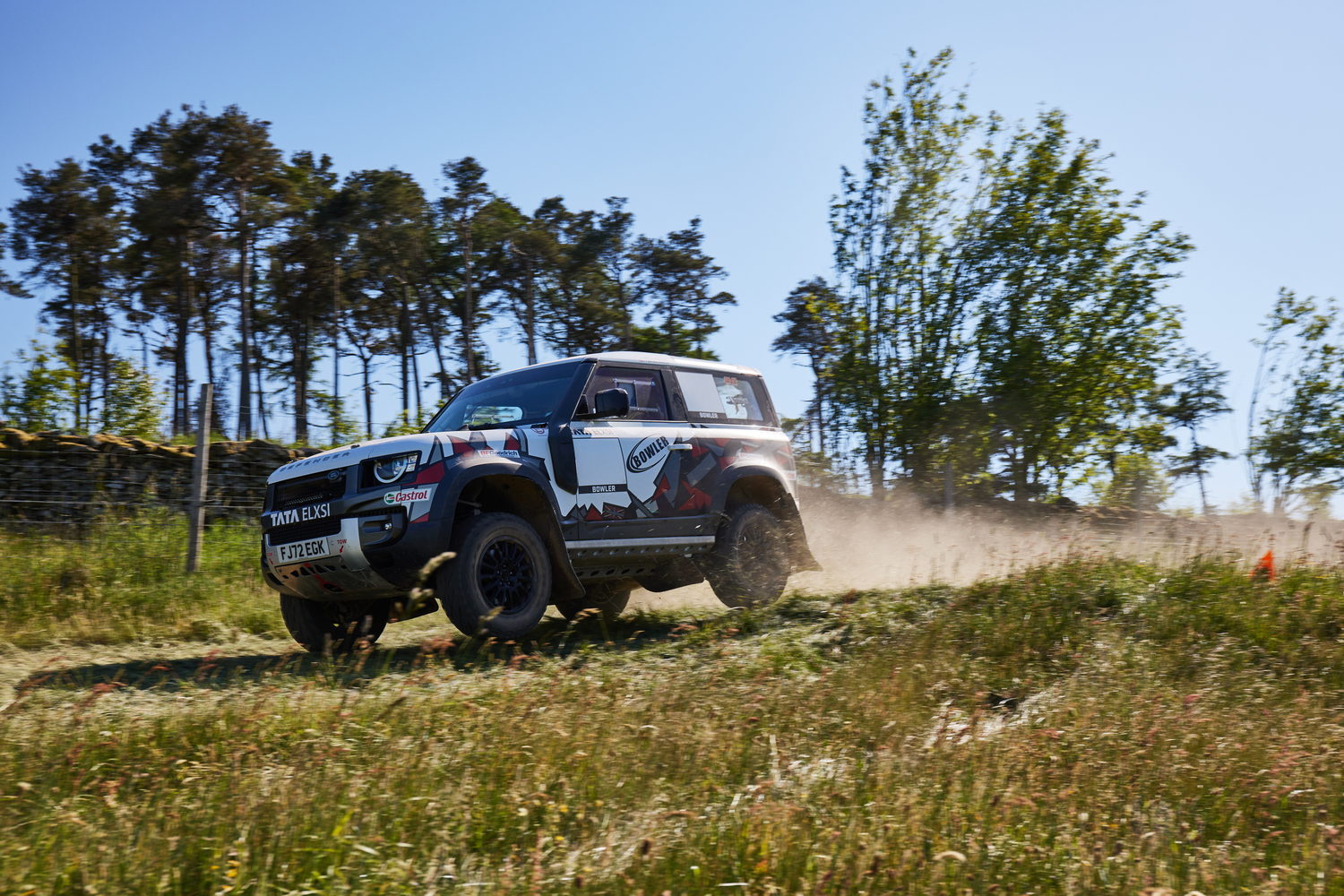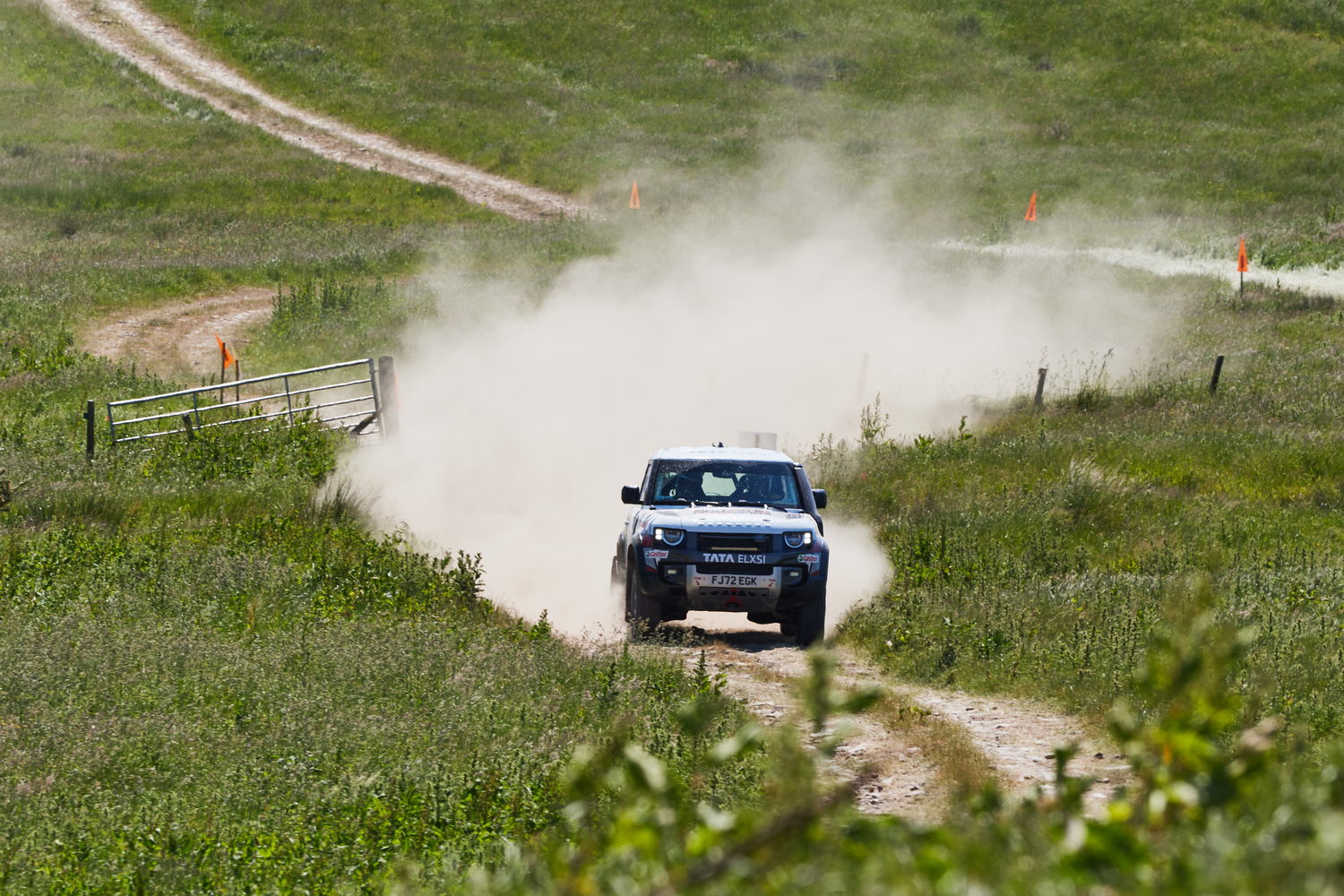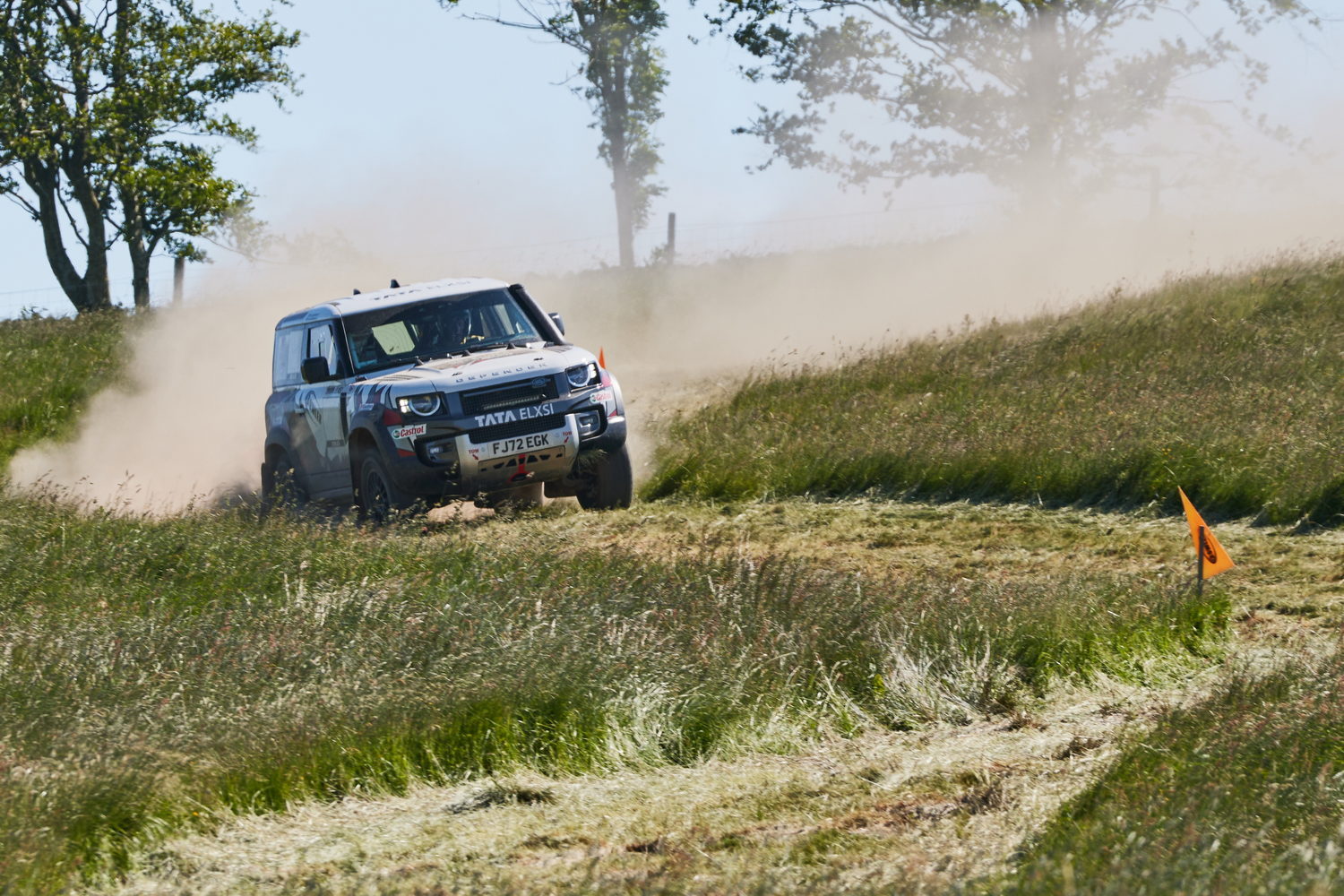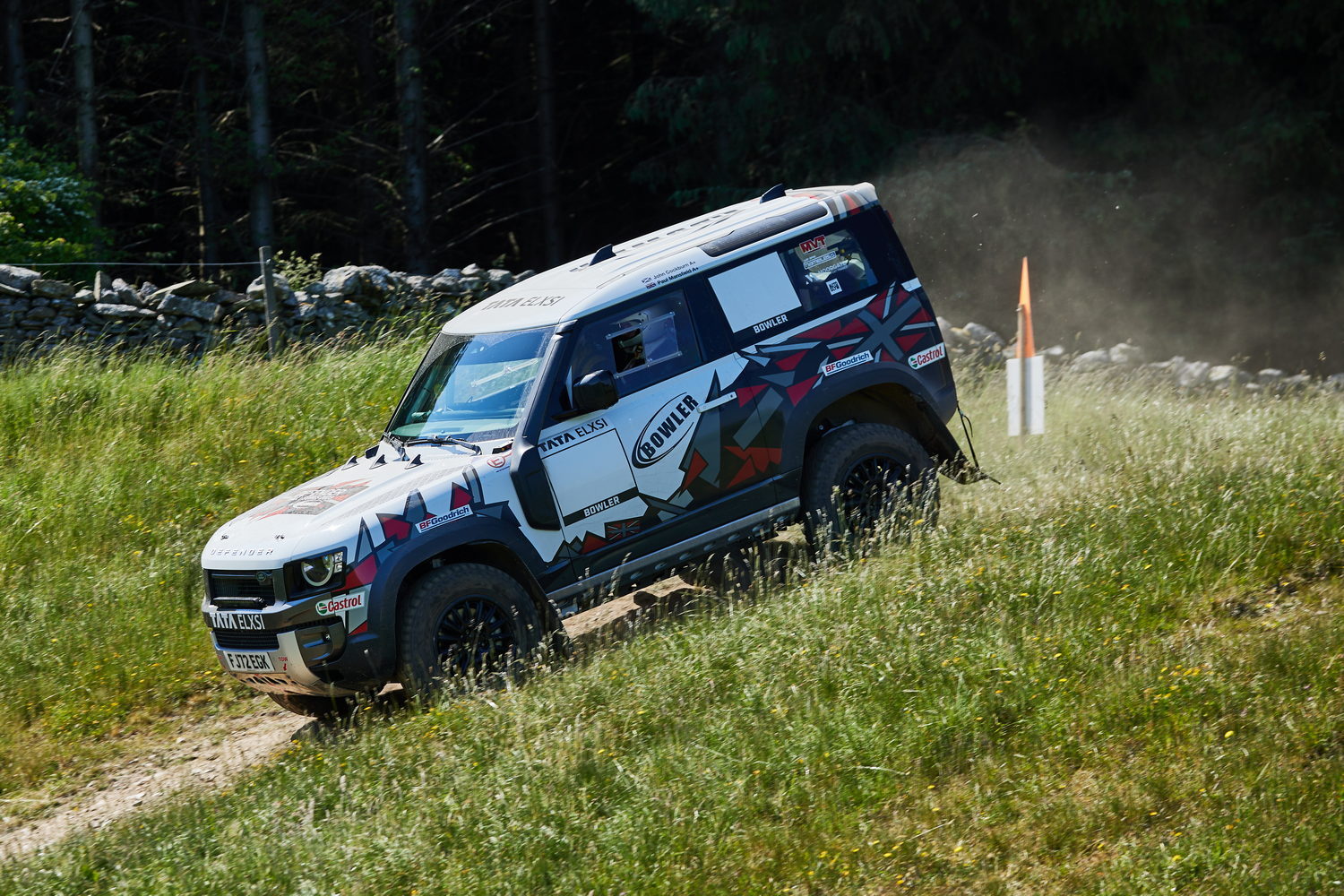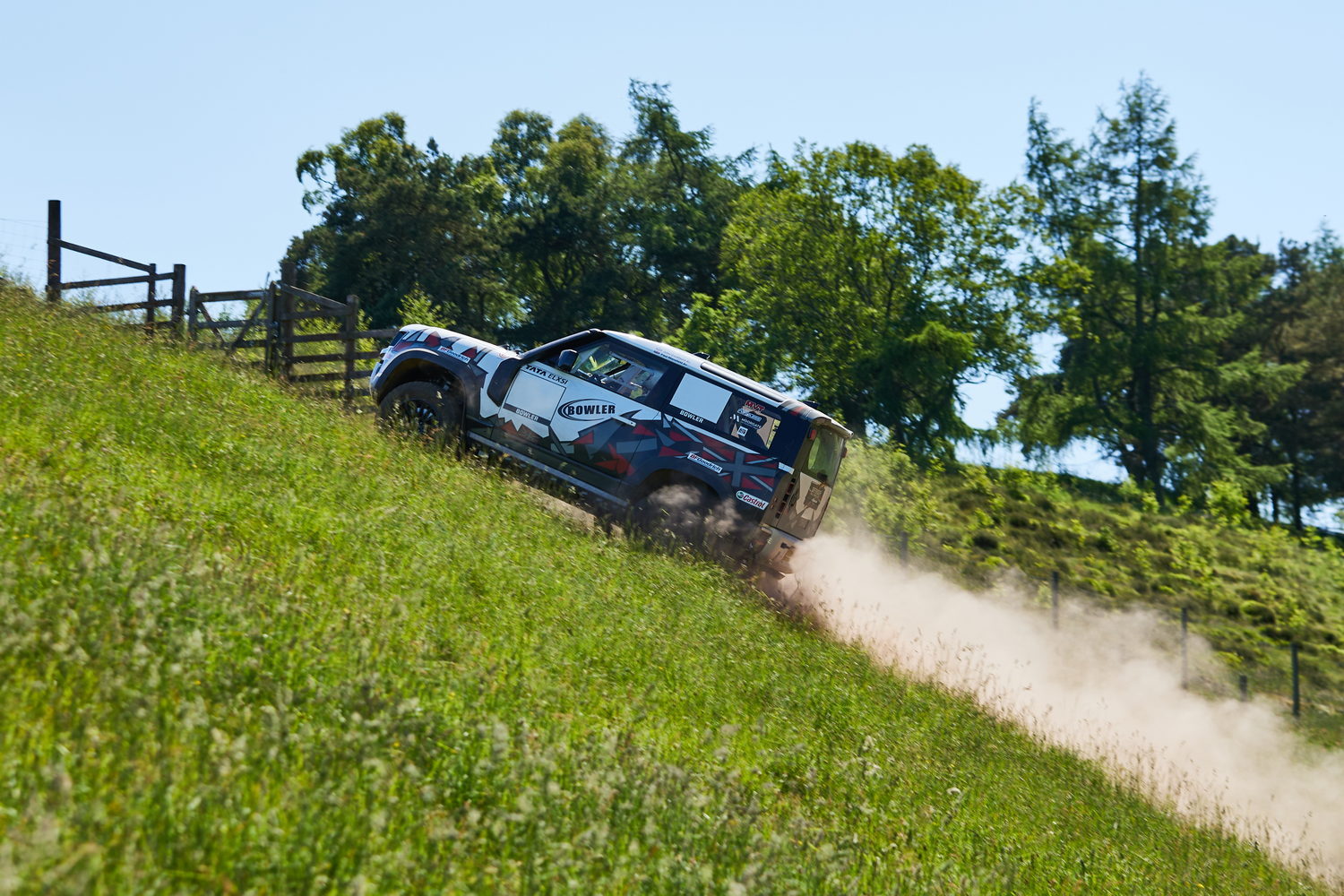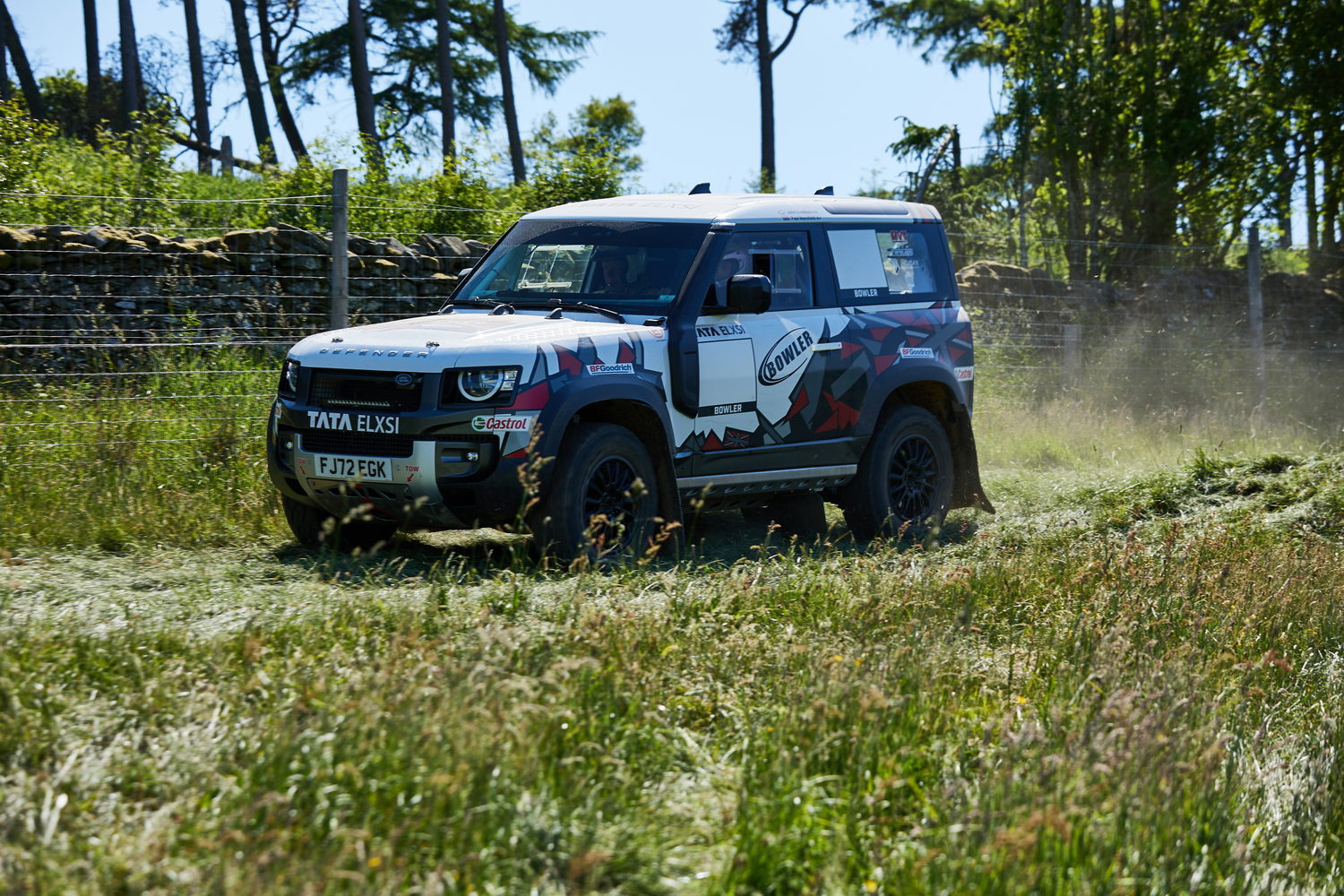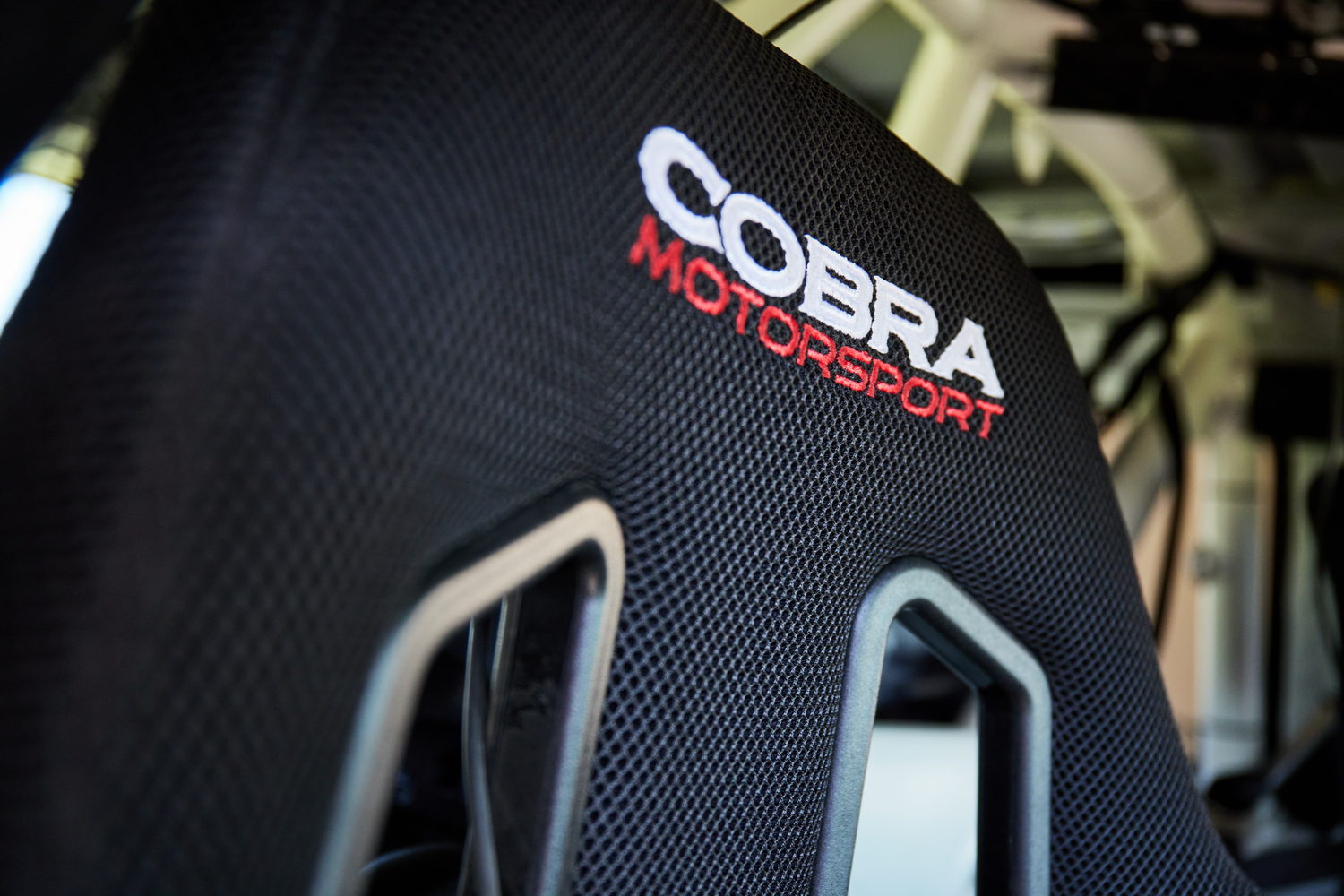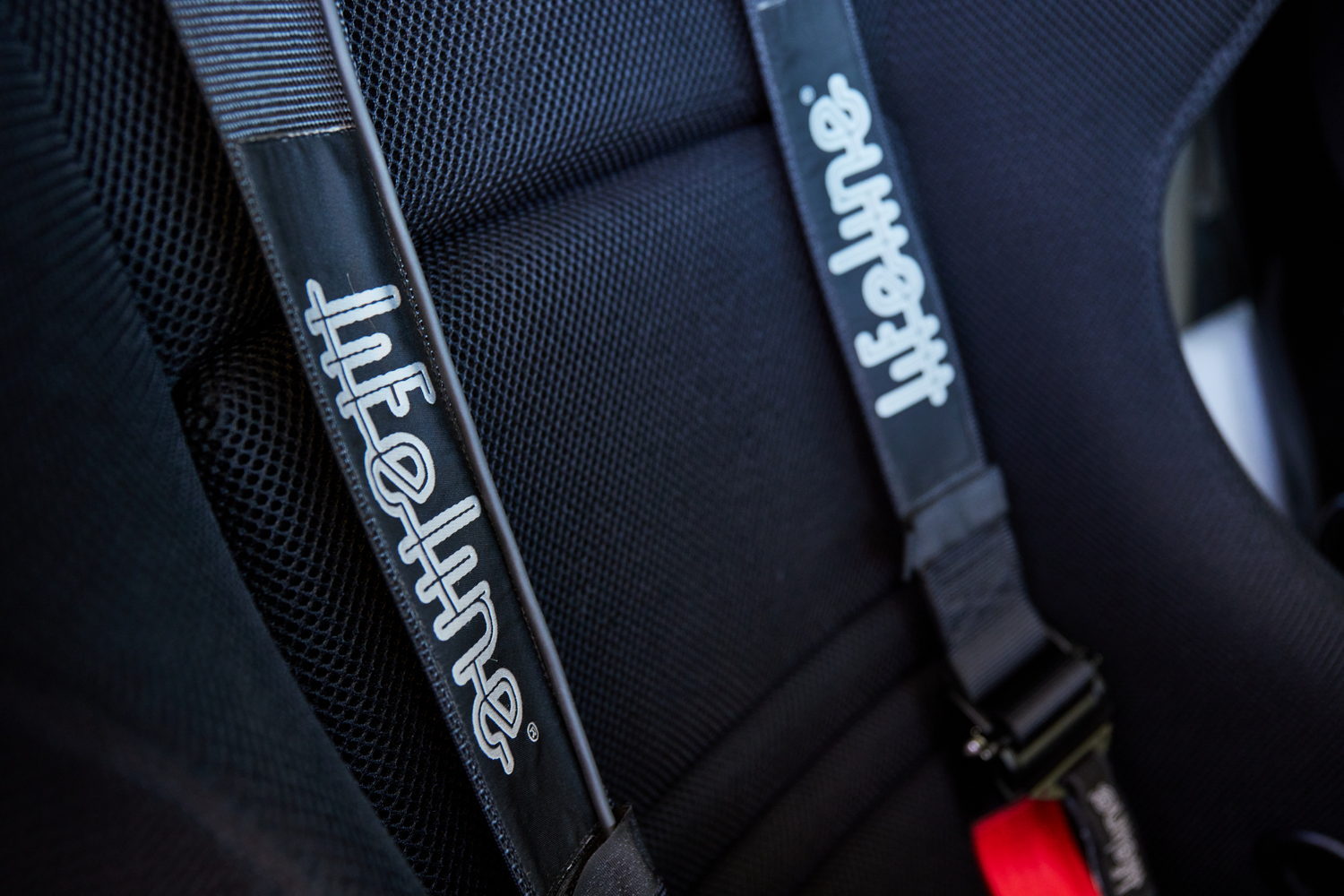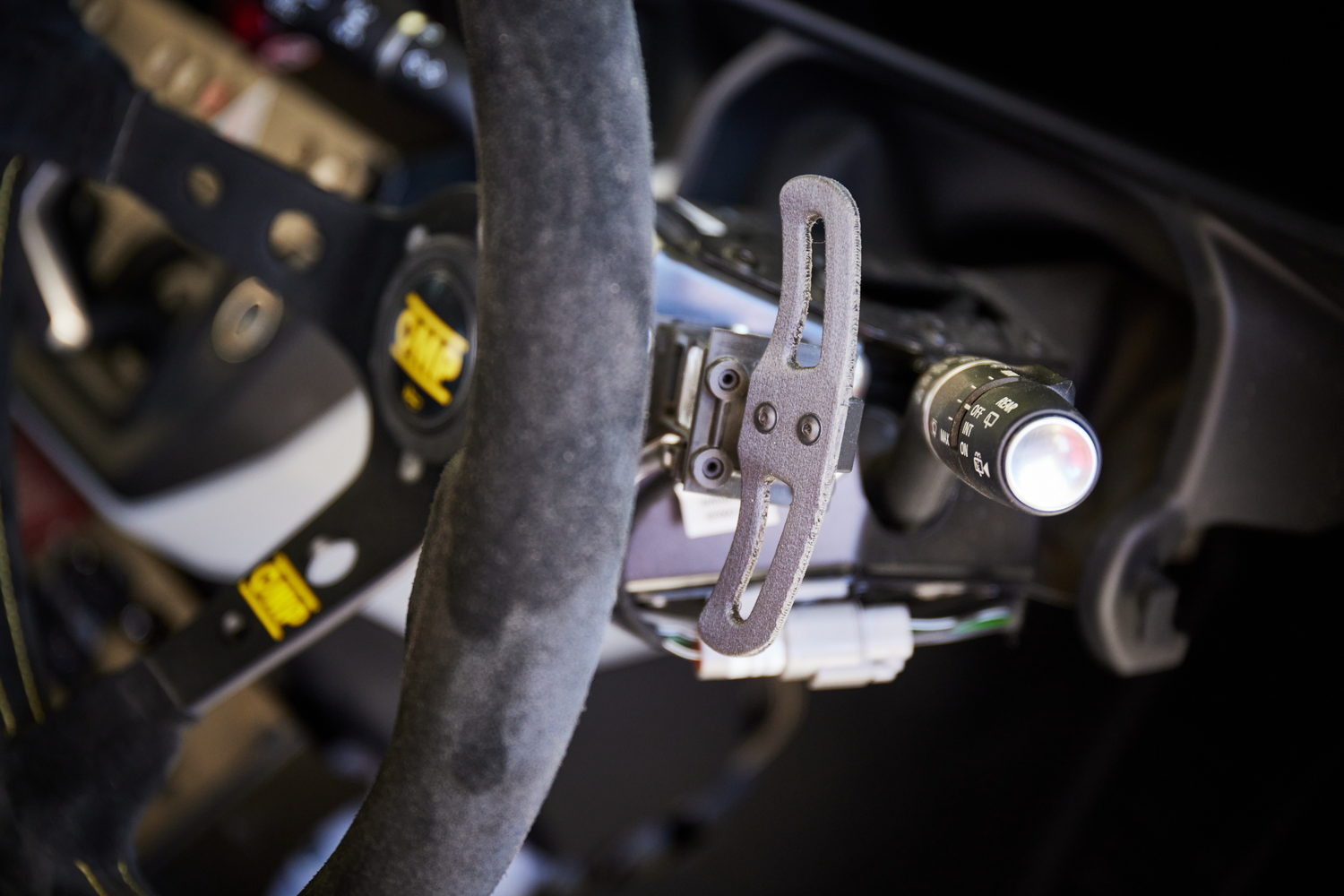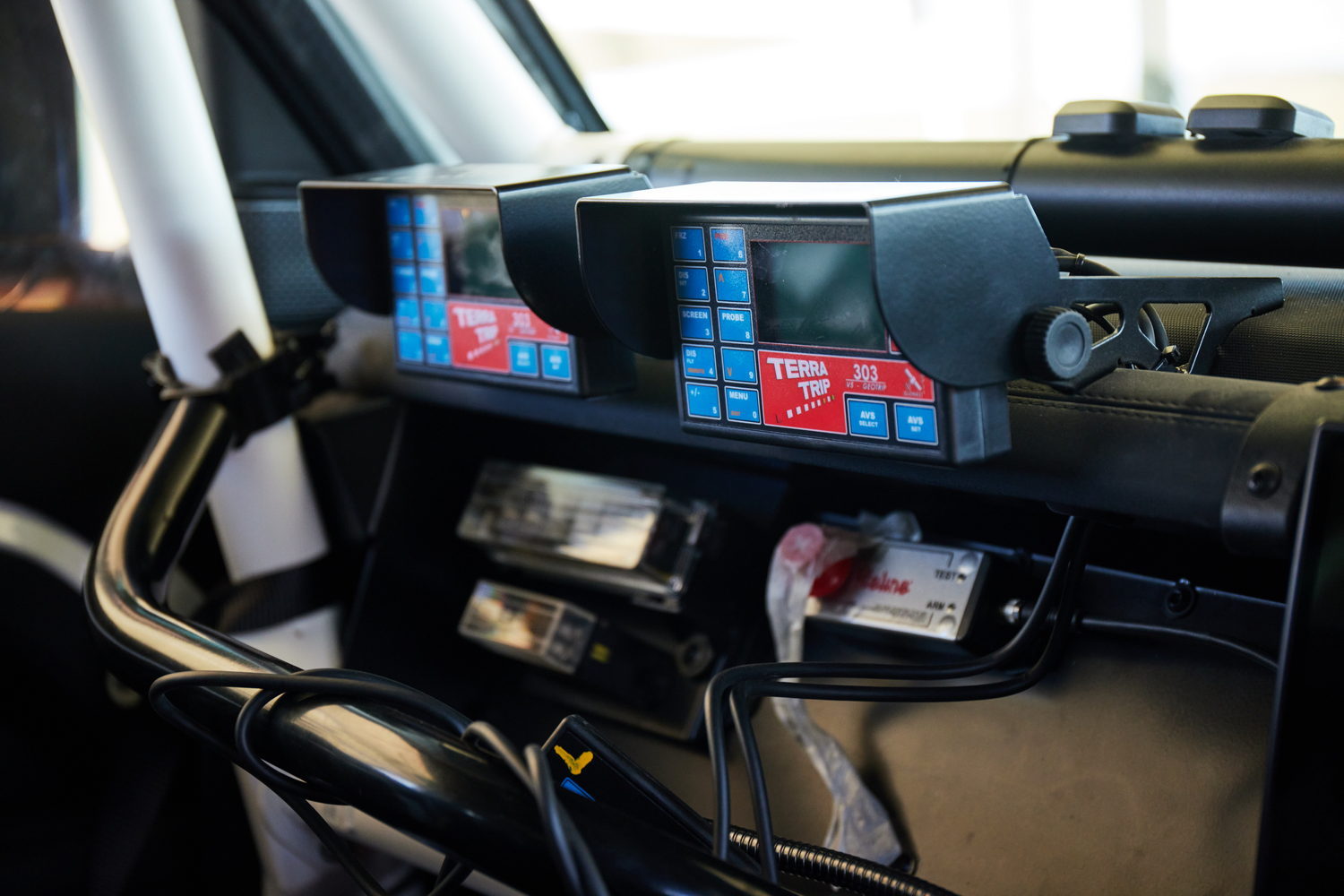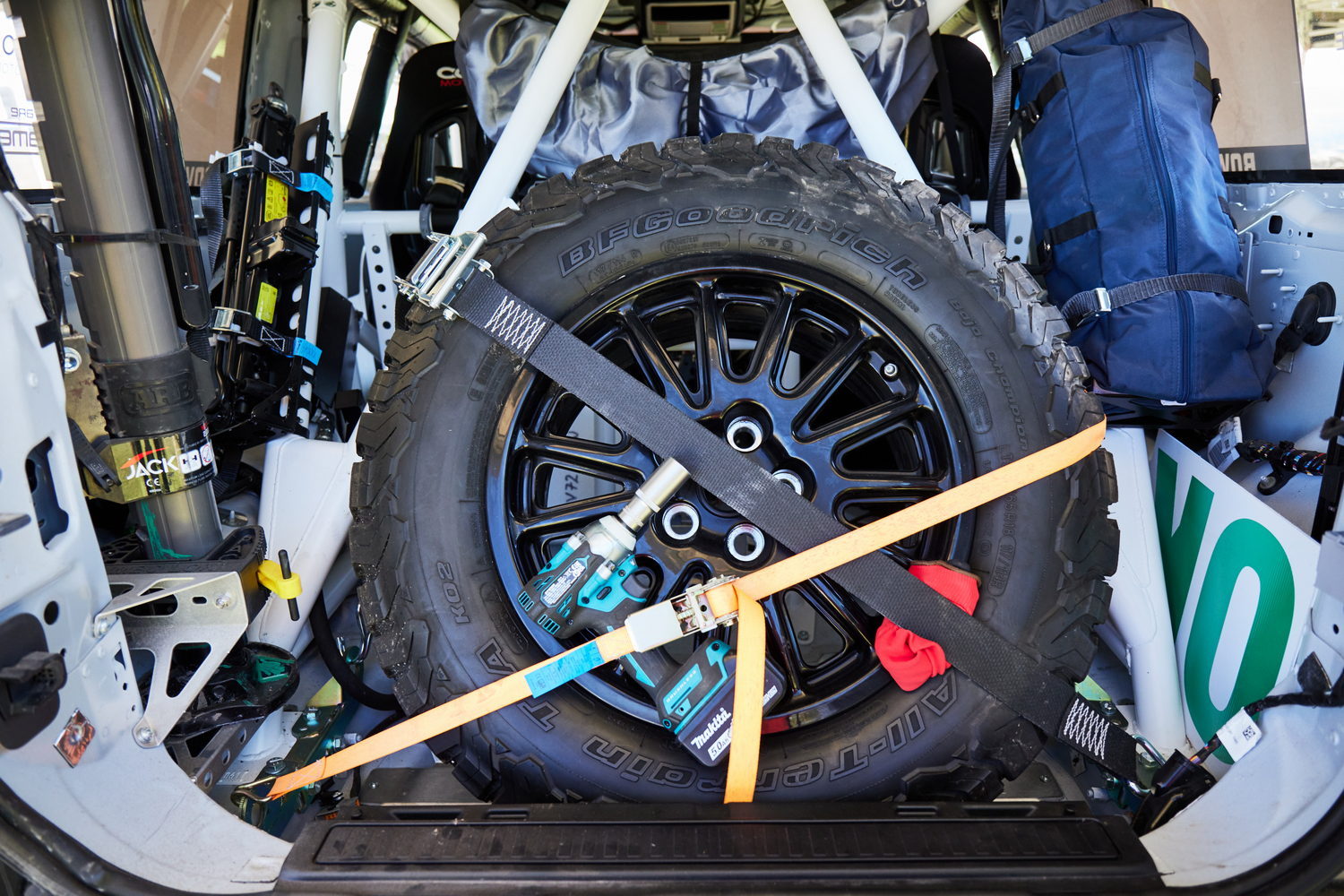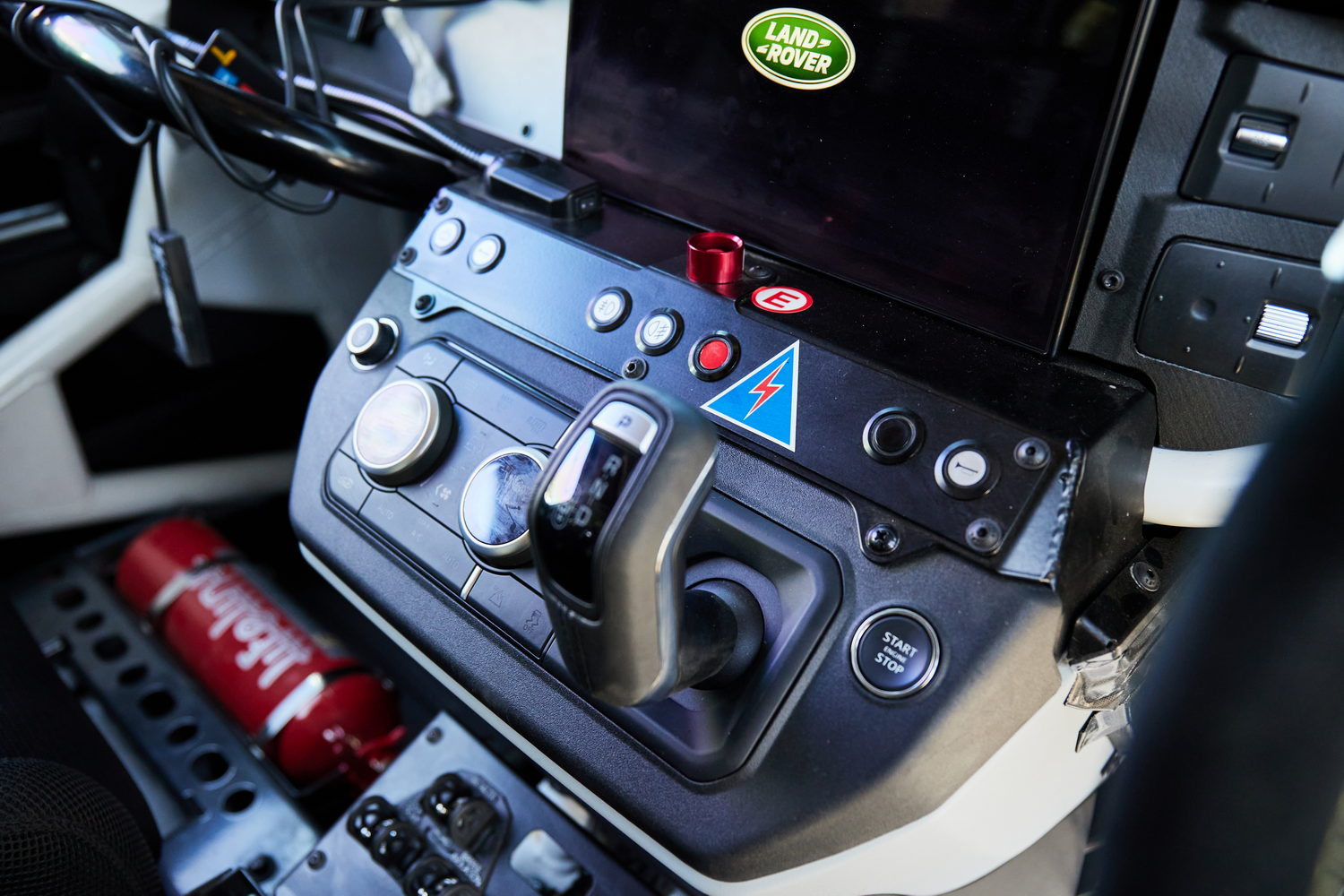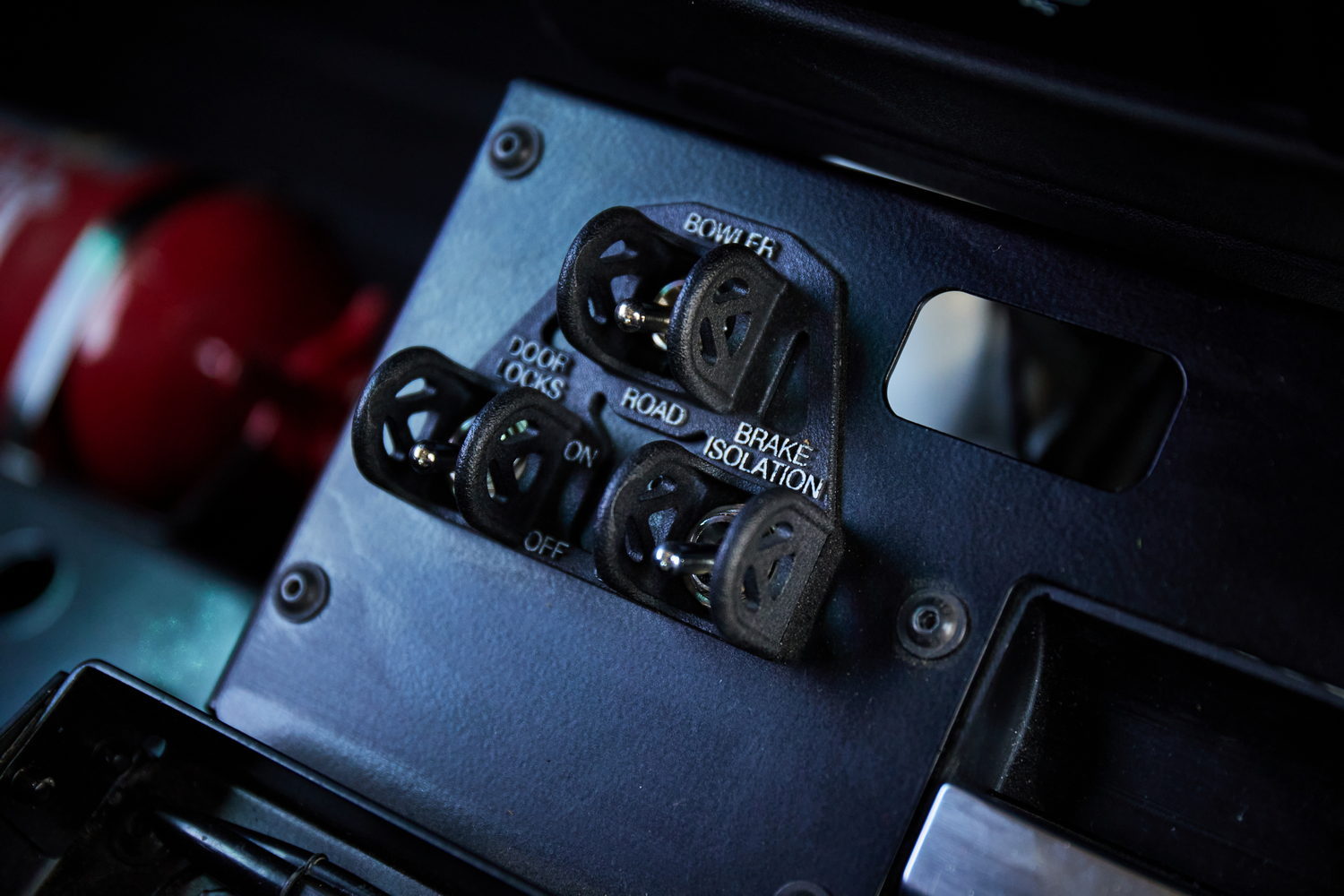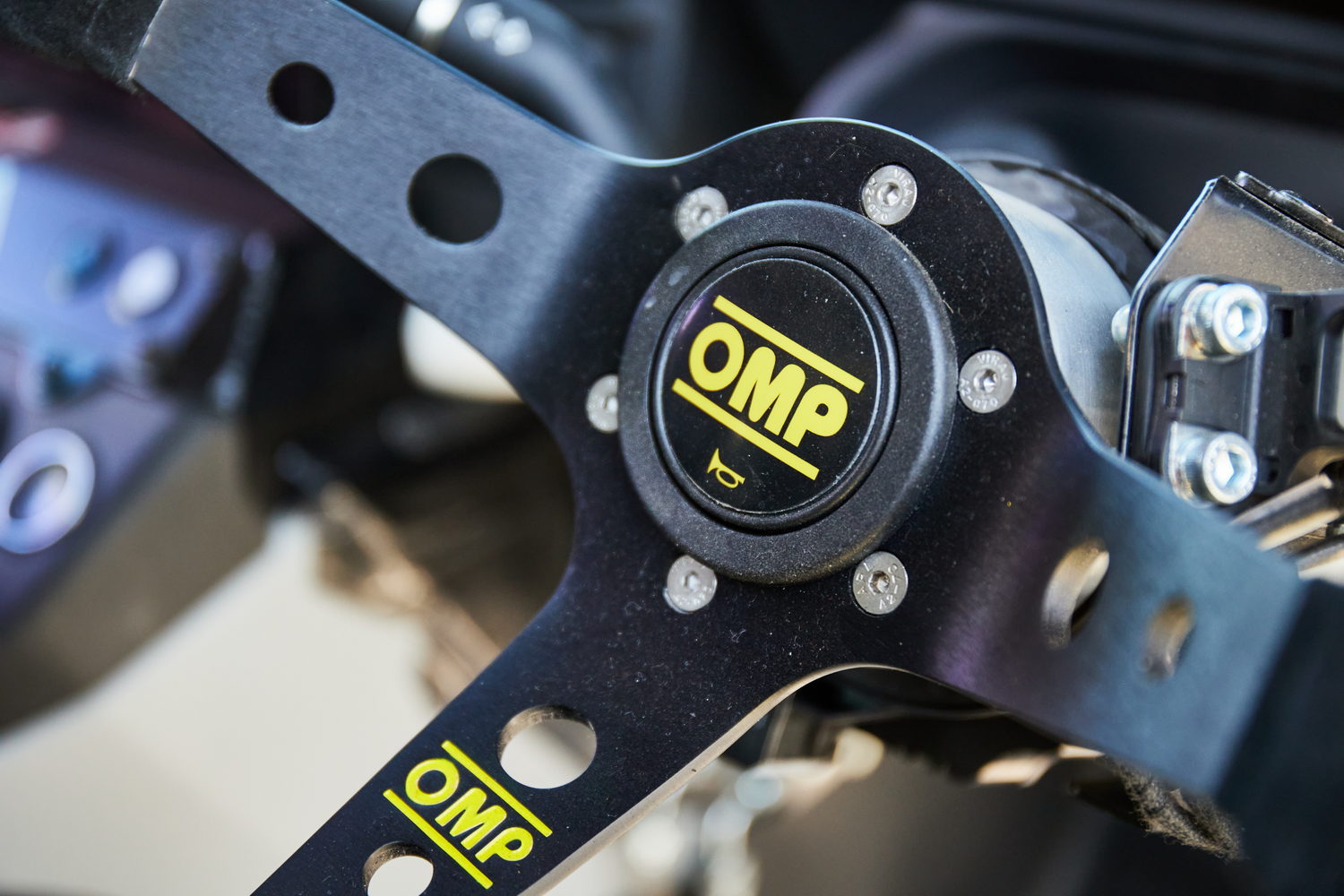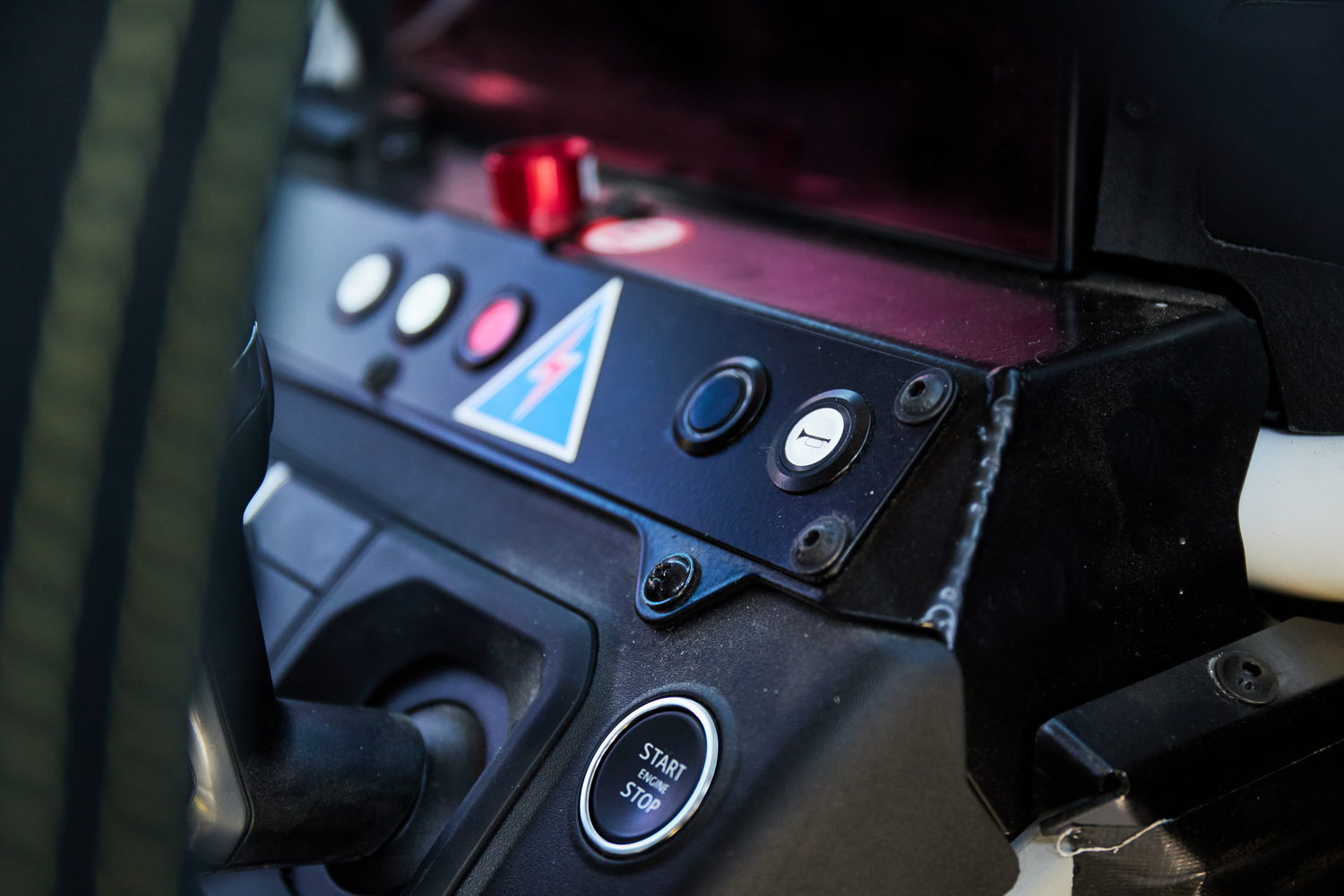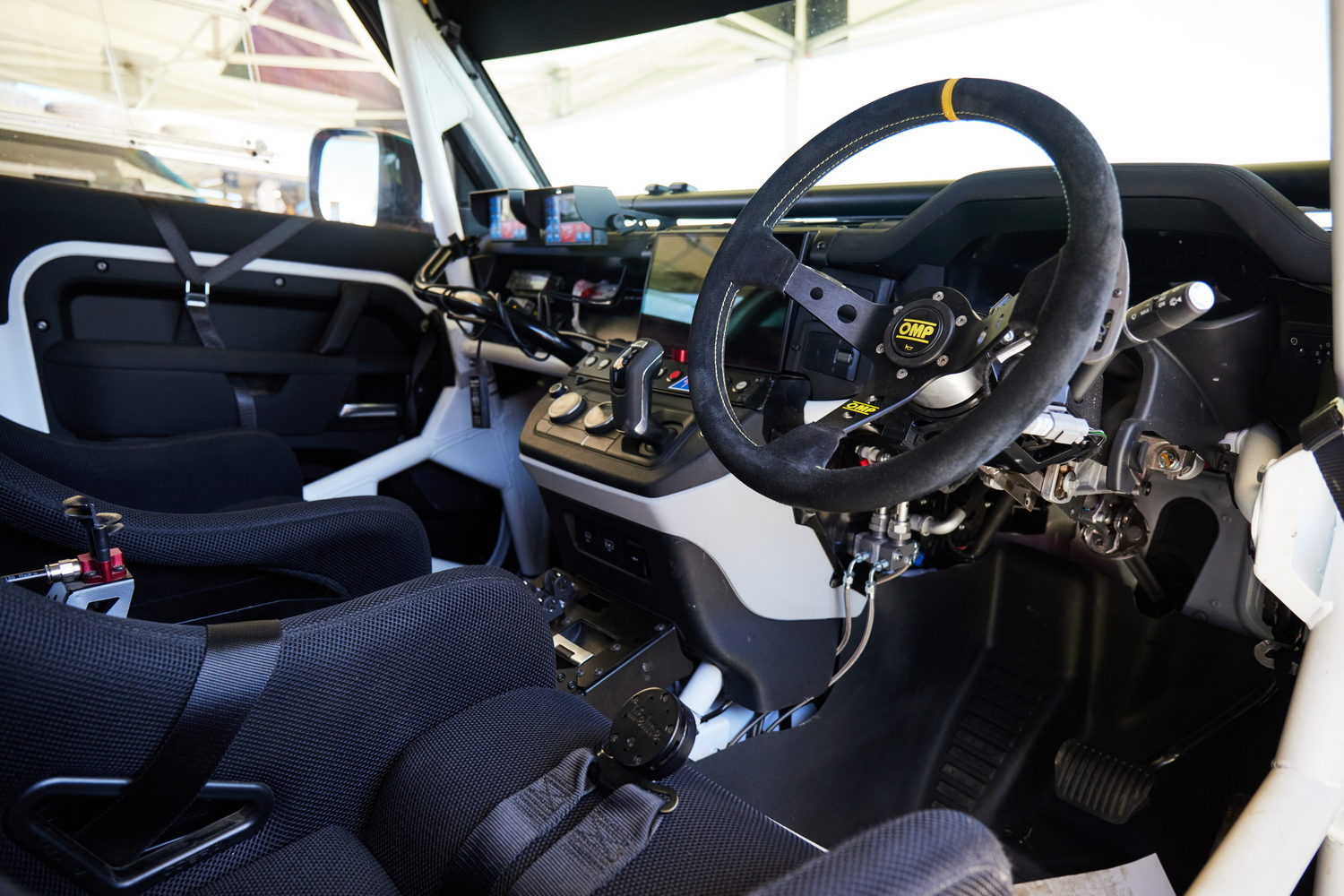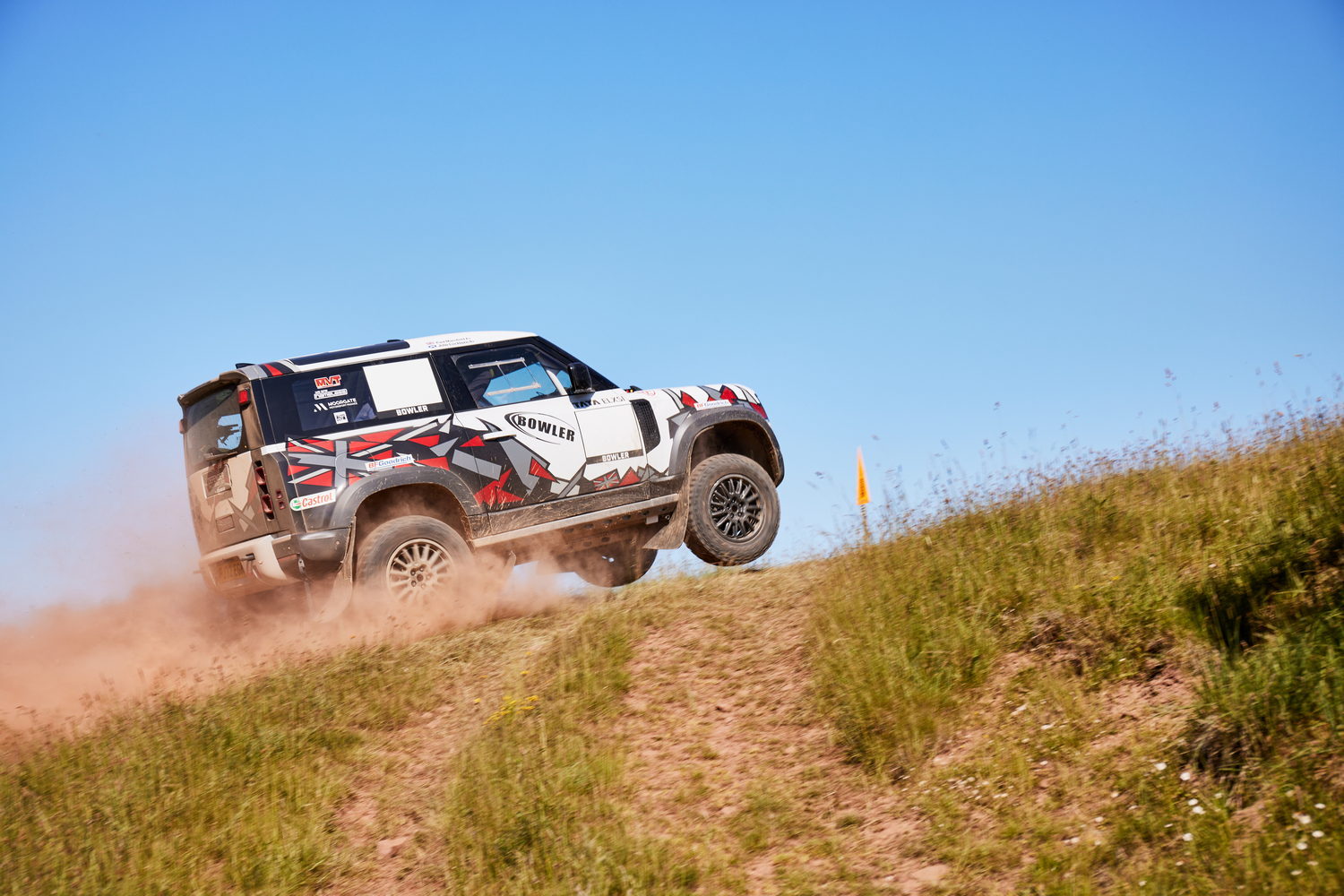The Bowler name has long been associated with Land Rover, earning a reputation for creating high-performance vehicles based on the original Defender. Acquisition by Land Rover a few years ago secured the company's future, and it is now producing a motorsport-ready and road-legal version of the current Defender 90.
To allow owners to explore its full potential beyond individual rally participation, Bowler runs several race championships in the UK and internationally, taking in spectacular landscapes in France, Spain and Iceland, with more events in the planning stages. These are designed as 'arrive-and-drive' setups for those who may not have the facilities or time to get a vehicle and associated wares from event to event. Bowler can provide all the logistical and mechanical support as part of an overall package. It also transports a fully operational parts department and service operation at each event, as well as hospitality.
In the metal
The conversion into the Bowler Defender begins with a standard Land Rover Defender 90 P300 SE that comes off the production line. Its body shell goes through significant modification to turn it into one of the toughest rally vehicles around. There are also changes relating to safety and ensuring that it meets the usual motorsport regulations.
All the standard car's upholstery and trim are removed and replaced by a custom roll cage with a spare wheel mount. There is scope to carry two spare wheels for longer rally stages along with a jack and wheel gun. Access to the rear is via the same side-hinged door as in the production car. However, Bowler replaces the original electronically operated handle with a manual 3D-printed item so that the crew can access it quickly even when the battery has been isolated. The wheels are a Bowler in-house design and are 25 per cent stronger than the OEM wheel. Bowler sells a 20-inch version of this wheel to the public, incidentally, and it is one of the only aftermarket wheels that complies with the Land Rover Defender warranty.
The Bowler Defender's underbody is significantly reinforced to protect it even in the most extreme conditions. The team cuts the bottom of the doors by 70mm to accommodate an aluminium skid plate that encases the underbody. Overall, the ride height has been increased by 25mm, with a 35mm boost in rear clearance thanks to the upgraded suspension. To improve the engine's thermal management and reduce the risk of accidental damage when competing, Bowler installs a larger single radiator allowing for the deletion of the smaller units at each corner on the front. These are enclosed and house auxiliary lights in a 3D-printed fixture, too.
Driving it
Getting into any race car generally requires some degree of body contortion, and the Bowler Defender adds height to that requirement. But once you negotiate the roll cage and settle into the snug race seat, what faces you is spartan yet familiar. Plenty has been stripped out of the interior, though Bowler retains the Defender's Pivi Pro touchscreen display, automatic drive selector and some other switchgear. Yes, these items could have been dumped in favour of some motorsport-specific hardware, but they work fine as is, so Bowler saw no need to replace them. Thankfully the same can be said for the air conditioning. There are several other additions, such as the necessary engine kill switch and extinguisher.
Even before you move an inch, the Bowler Defender feels tough. Maybe it's the higher driving position, maybe it's the extensive roll cage and stripped-out interior. What is more surprising is what happens when you press the engine start button. The 2.0-litre turbocharged four-cylinder engine turns into life with little-to-no fanfare. Perhaps I spent too much of my youth watching flame-spitting anti-lag rally cars in action.
Another quirk of the Bowler is that it retains the original gearbox, complete with the automatic shifter carried over from the production car. That does bring a degree of civility to the Defender, as does the retention of its traction control and anti-lock braking. But drivers can select a 'Bowler mode' that disengages those assistance systems off-road. This also allows the driver to tune the brake bias forwards or rearwards to suit their preference.
To get a realistic sense of what the Bowler Defender is capable of, we are given access to a typical short rally stage in Scotland. Some initial recce laps as a passenger highlight the different approach needed to get the best performance from the Bowler. It's very much a case of 'slow in, fast out' when on such terrain, and dialling back the speed by only 5 or 10km/h in places can make a big difference to the overall pace. As the stage clock counts down to zero, it's sensible to plant the accelerator pedal just after you see the one-second mark appear. That allows for the slight lag between the engine spinning up and the transmission getting to work.
No matter how securely belted in you are, this is a rough ride as the Defender bolts forward and into the first twisty section. Being strapped in amplifies the sensation of the vehicle's rotation and direction change. Despite being on the loose stuff, the front wheels bite and provide impressively clear steering feedback. The short wheelbase of the Defender 90 adds to its agility, and the suspension laps up everything thrown at it. The Defender can be made to slide around, which looks good for the camera and feels fun, but that loses time on a stage section.
If there's one thing you must constantly remind yourself of, it's that there's more than enough ground clearance. At times it will scrape its underside, especially on more heavily rutted sections, but there's so much underbody protection it goes like water off of a duck's back. That lag in engine response initially frustrates, but you quickly begin to drive around it, getting onto the power a second earlier than you typically would, such as when travelling through a steep dip. Gauge it just right and the power is there just when you want it.
The driver can use a single push-pull shift paddle to change gears manually, though Bowler says many competitors leave it in full auto mode when racing. Once on the gas, it wastes no time building up a head of speed, so you have to be extra wary of this, as hitting an unsighted rut or large rock could result in a spectacular end to proceedings.
On firmer and more predictable fire road sections is where the Bowler's true pace begins to reveal itself. It's easy to imagine how capable and fun this machine could be on something like the Baja 1000. As quickly as it builds up that pace, so too will it dissipate speed and even on loose surfaces the brakes provide tremendous stopping power. Considering that with all of the additional bracing and protection, it weighs almost the same as the standard production Defender 90 and that the engine isn't tuned to produce any extra performance, this thing really moves and feels as if it could tackle even the most demanding off-road rally stage.
What you get for your money
To get your hands on a Bowler Defender you'll need to part with around €152,000 (plus VRT if you're registering it in Ireland), which also gives you access to the Defender Rally Series. That includes all of the support that goes with competition use. Costs for competing in the Defender Rally Series do vary depending on a competitor's specific needs, such as car transportation and how many consumables you get through. Bowler can provide a comprehensive mechanical support package that includes access to every possible spare that might be needed during an event, so the risk of losing out on the opportunity to race is minimised. It's also worth noting that you still own the Defender after the season, unlike many other more expensive pay-to-drive race series.
Summary
The mechanical and setup changes made to create the Bowler Defender are impressive and allow it to compete on some surfaces that the average rally car simply couldn't. The attention to detail that goes into its creation is just as expected from a factory works operation, too. The package that it offers competitors with the Rally Series is nothing short of excellent, and the door will open to even more events and locations in the future.

